
Israel is an incredibly diverse landscape of Biblical sites, desert, mountains, and lush landscapes. With so much beauty, history, and culture it can be hard to know where to start. If you’re planning a trip to Israel this guide will help you plan your perfect itinerary!

This travel guide to Israel is for a 7 day itinerary, but I’ve got options for both shorter and longer trips.
Though it’s a small country, about the size of New Jersey, Israel has made a huge impact on the world. Because it’s a place brimming with technology and innovation in Tel Aviv and the Biblical sites in Jerusalem, it’s on many people’s bucket list. I discovered there’s much more to Israel than just these two amazing cities.
Israel is one of the most important religious places for three different religions: Jews, Christians, and Muslims, which means many religious and nonreligious people find this area fascinating. Tracing the history back through landmarks of some of the most significant events, traveling here brings the history books to life.
Contents
- Here’s your perfect Israel Itinerary
- Day 1: Tel Aviv & Jaffa
- Day 2: Mediterranean Coast: Caesara National Park, Tulip Winery, Akko, Tiberias
- Day 3: Tiberias, Sea of Galilee, Magdala, Mount of Beatitudes, Capernaum, Tabgha, Golan Heights
- Day 4: Jesus Baptism Site at the Jordan River, The Dead Sea, Qumran
- Day 5: Jerusalem
- Day 6: Jerusalem
- Day 7: Tel Aviv
- Extra time?
- How long to stay in Israel
- Is Israel Safe?
- What to pack for Israel
- When to go to Israel
- Things to Know Before You Go to Israel
Israel Overview
Day 1: Tel Aviv and Jaffa
Day 2: Mediterranean Coast: Caesara National Park, Tulip Winery, Akko, Tiberias
Day 3: Tiberias, Sea of Galilee, Magdala, Mount of Beatitudes, Capernaum, Tabgha, Golan Heights
Day 4: Jesus Baptism Site at the Jordan River, The Dead Sea, Qumran
Day 5: Jerusalem
Day 6: Jerusalem and Tel Aviv
Day 7: Tel Aviv
Day 1: Tel Aviv & Jaffa
Start your trip in Tel Aviv. This city is known as the “Silicon Wadi” because of its booming high-tech industry. It’s a young and vibrant city with a lot to offer including great nightlife, beaches, and restaurants. While there, be sure to check out some of the famous tourist sites like the Old Jaffa Port, the Carmel Market, and Bauhaus architecture.
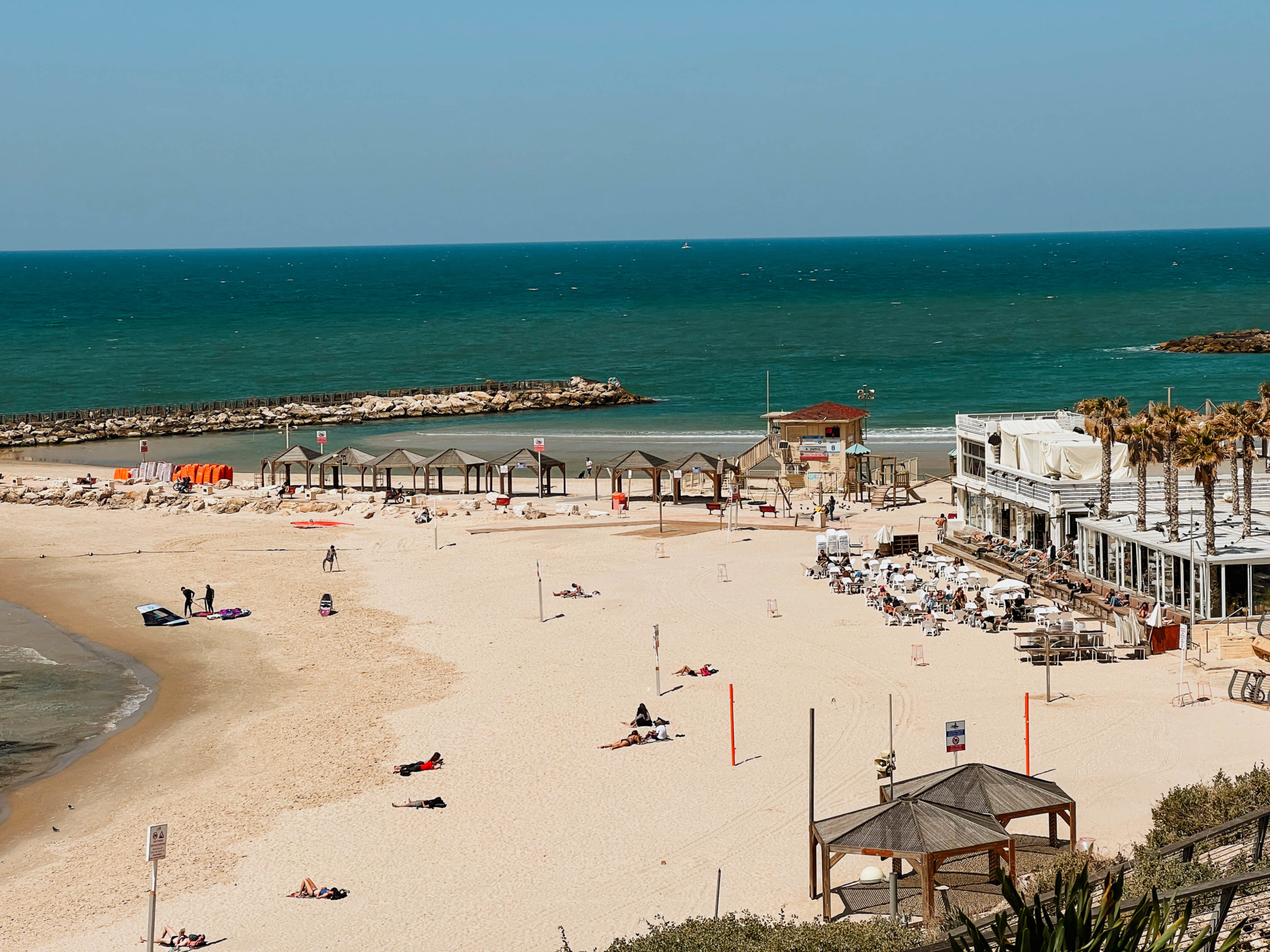
Jaffa is one of the oldest cities in the world at over 4,000 years old! It’s a city with a lot of character, so just walking around is a great way to explore. Traverse the narrow, winding streets and browse the art galleries, cafes, and shops.
If you like graffiti and murals, check out the unique Florentin neighborhood. This is where you’ll find some of the best street art in Tel Aviv. Next, you’ll find the Bauhaus construction along Rothschild Boulevard in the “White City.” Lovely homes with clean lines are constructed in rows. This is the largest single urban ensemble of Modern architecture in the world and the first modern city in Israel.

Day 2: Mediterranean Coast: Caesara National Park, Tulip Winery, Akko, Tiberias
Drive North along the coast to visit some of the Roman ruins at Caesara National Park. This is a beautiful spot for hiking, picnicking, and swimming. The park is located on the Mediterranean coast and has stunning views.
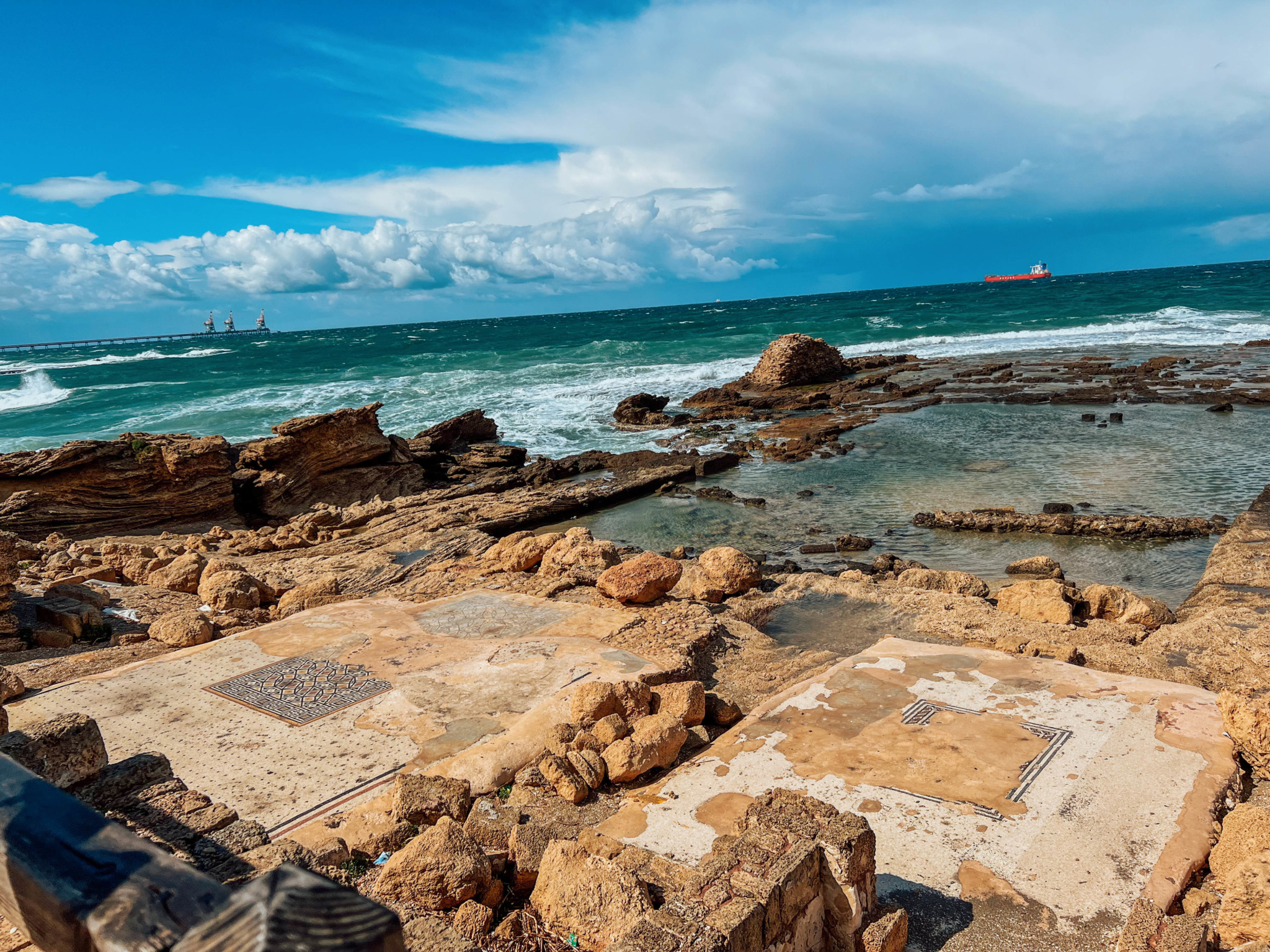
This is where you’ll find the ruins of the port city that King Herod built. Right on the water you’ll find mosaic floors and even an amphitheater that’s still in use today.
Afterwards, head to the Tulip Winery for a tour and tasting. Not only is the wine delicious and unique, there’s a purpose behind it. The winery works with a community of special needs individuals to help produce the wine. The distinctive wine is absolutely the best I had on the trip. I was so impressed with their mission in helping the community.
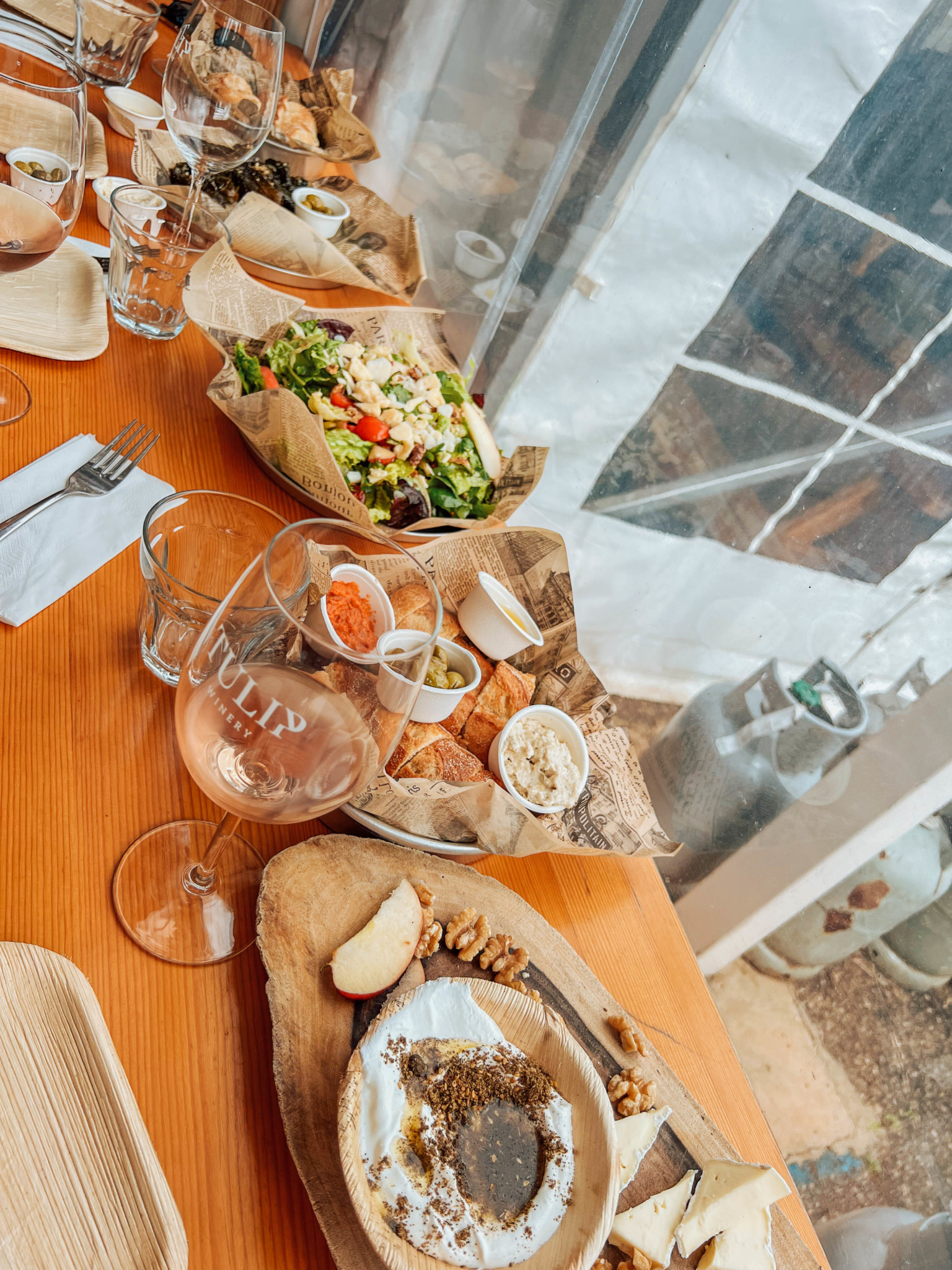
Next, stop is Akko. This is a UNESCO World Heritage Site with a lot of history. Akko is an old city with a Crusader past. It’s now a peaceful place with a beautiful harbor.
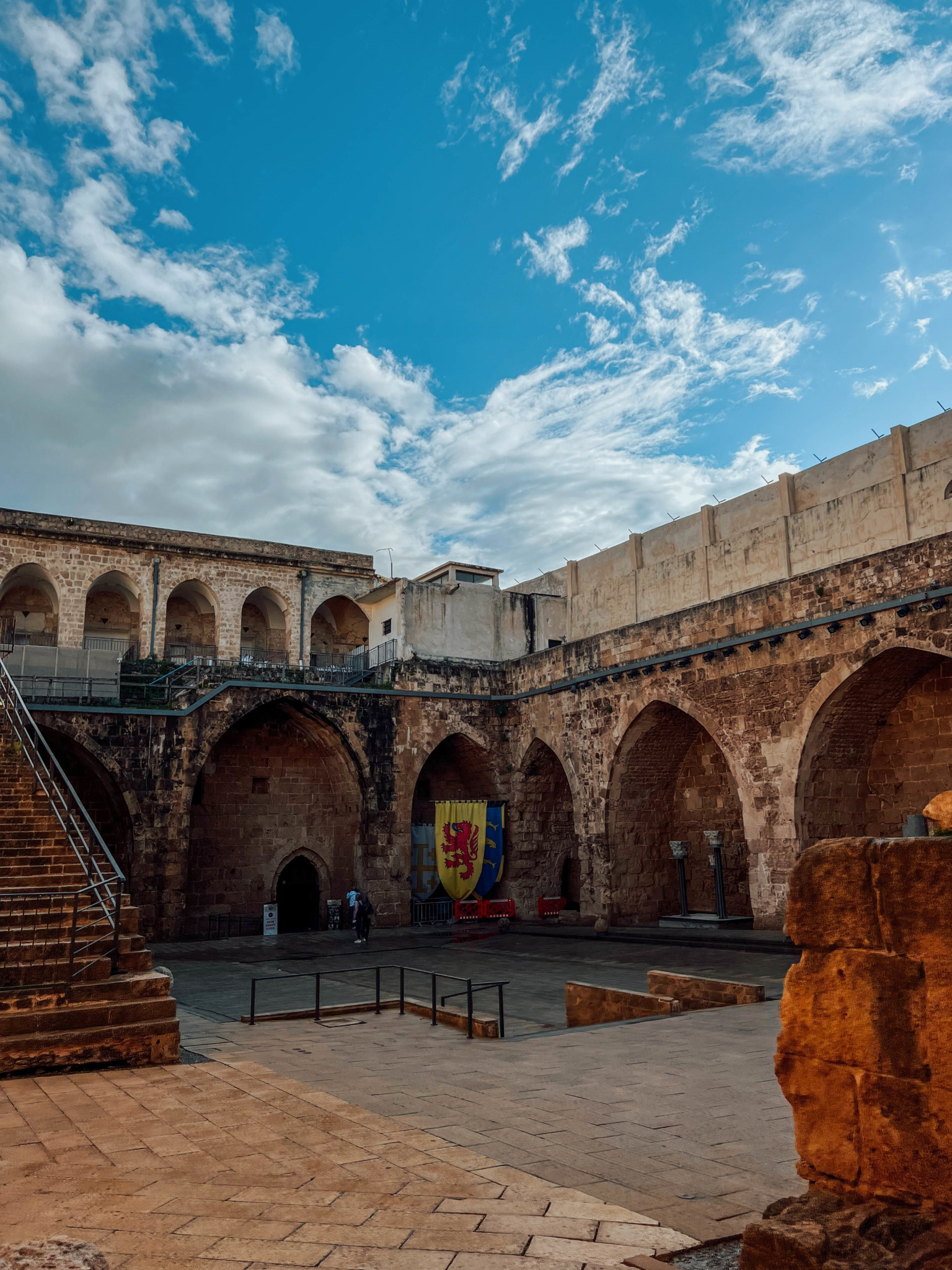
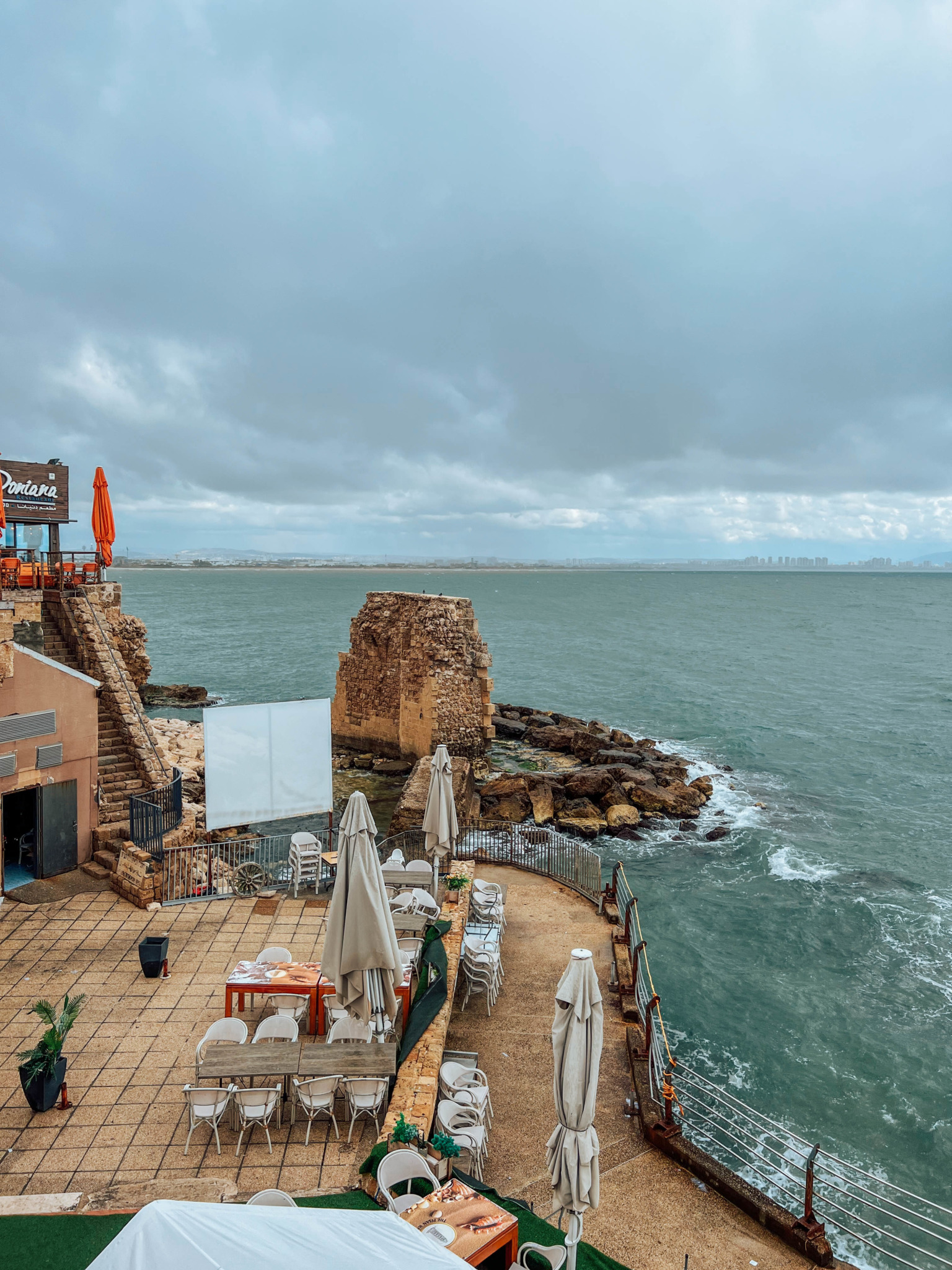
The old city of Akko is surrounded by fortifications and is a great place to explore. Head down into the walls’ tunnels to discover the Ethnographic Museum and tour of the Hospitallers Order’s Fortress from the Crusader period. Discover the amazing ruins of a long-forgotten order, as well as restored and spectacularly reconstructed areas, courtyards, and streets that have been lost for centuries but are now being revitalized to tell their story.

Akko also has colorful markets, museums, beaches, a fishermen’s port, marina, and plenty of seafood restaurants making it a great place to explore.
End your day in Tiberius, located on the Sea of Galilee. This is a great spot to relax and enjoy the views.
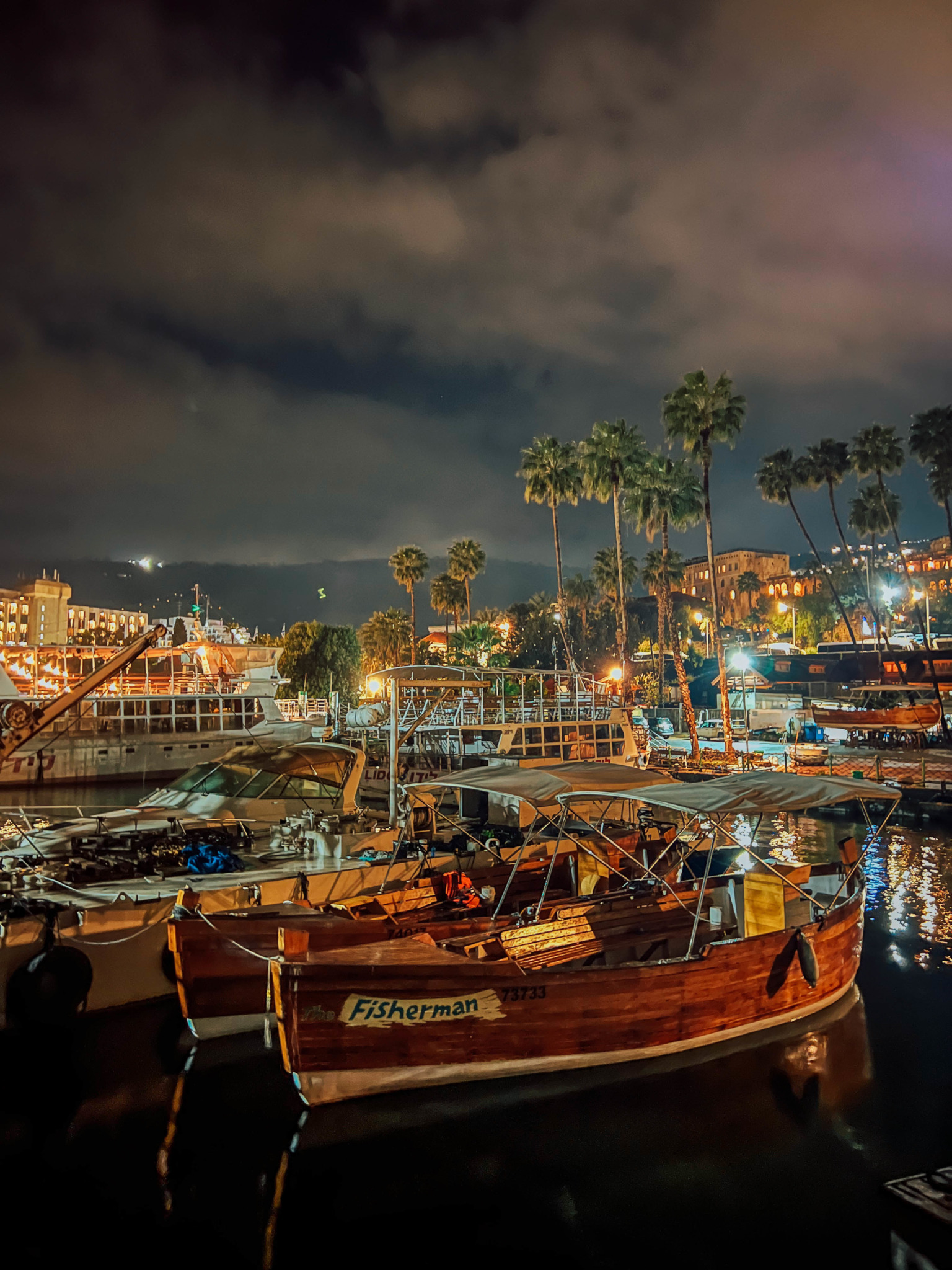
A great place to eat in Tiberius is Deck’s Restaurant for lots of tasty meat and seafood options.
Day 3: Tiberias, Sea of Galilee, Magdala, Mount of Beatitudes, Capernaum, Tabgha, Golan Heights
From Tiberius we drove over to Magdala. This is where Mary Magdalene is from. Here, there’s a brand new hotel for the many people who make the pilgrimage here.
Located near the shores of the Sea of Galilee, Magdala was fishing village which had a synagogue. Uncovered in 2009, archaeologists discovered the presence of a Jewish community in Magdala by discovering the First Century Synagogue. This synagogue is one of seven in the world and the best preserved today.
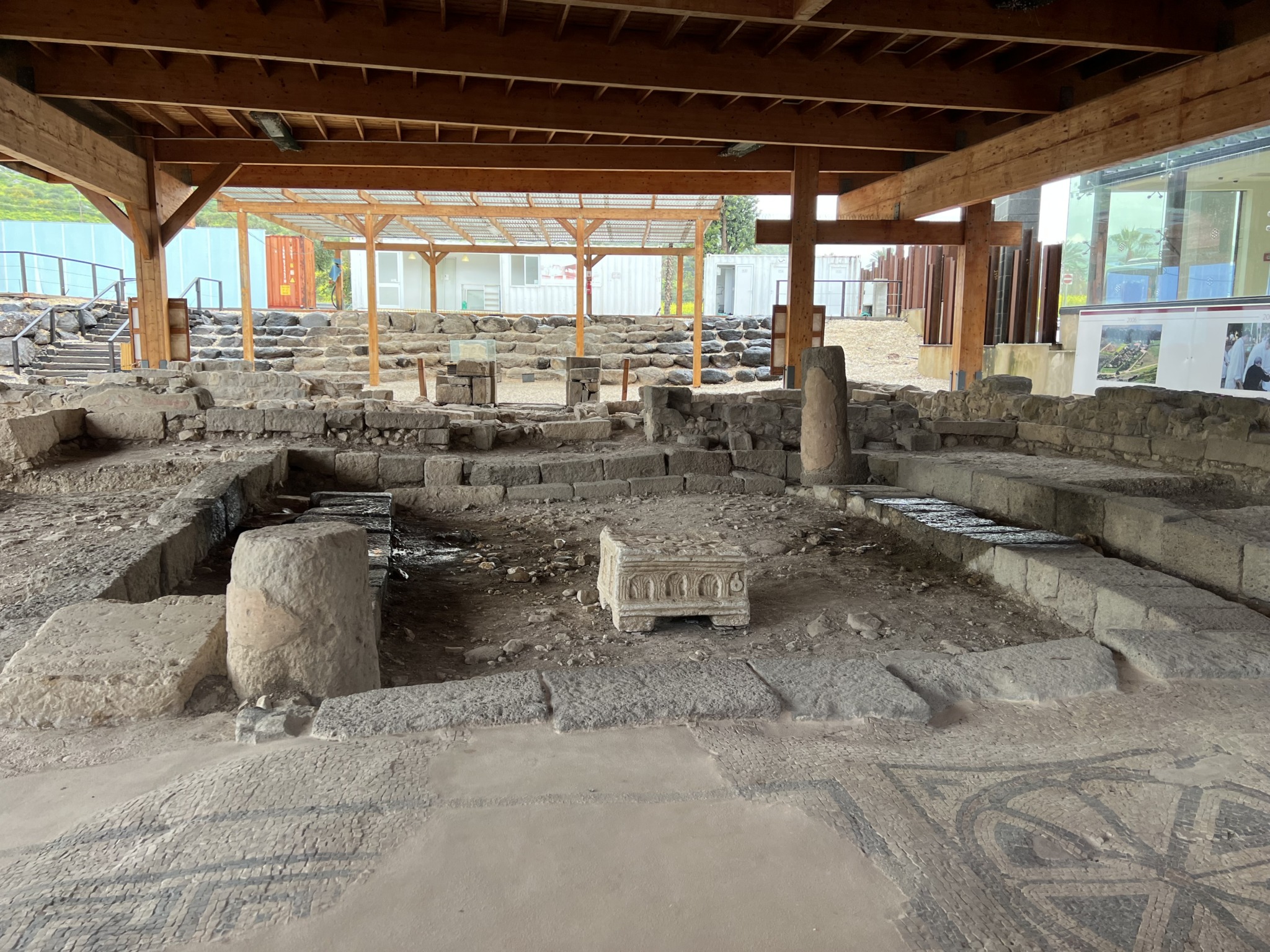
Most notably, archeologists found the Magdala Stone, a discovery they have quoted to be, “one of the most significant finds in the past 50 years.” Here, Jesus taught, healed and preached.
Next we headed to Mount of Beatitudes, the place where Jesus is said to have given the Sermon on the Mount.
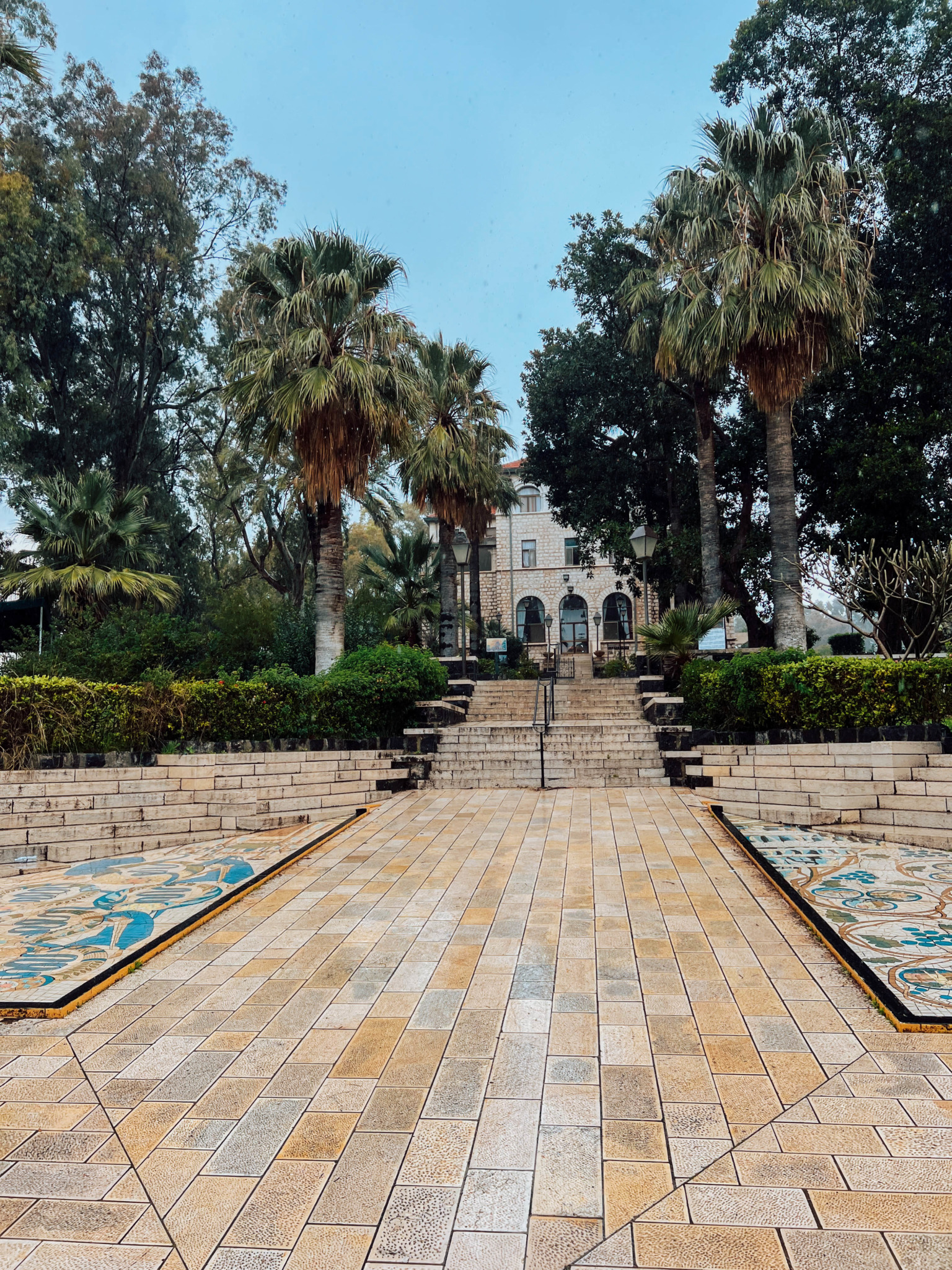
This is a beautiful and peaceful spot overlooking the Sea of Galilee. Whether or not if you’re religious, this is a spiritual place to reflect.
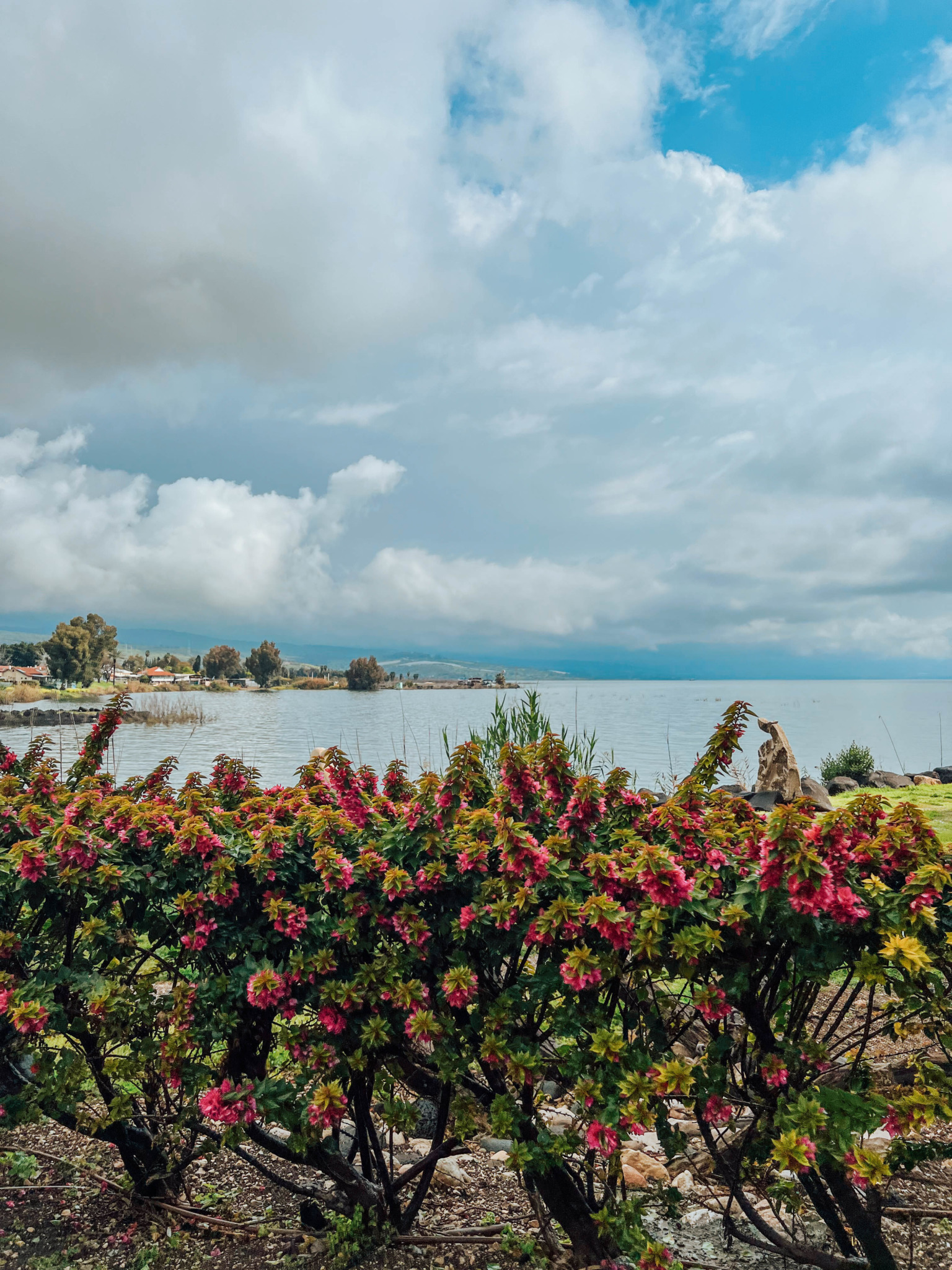
Tabgha is another tourist stop on the Sea of Galilee. Here is where you’ll find the Church of the Multiplication of the Loaves and Fishes. The mosaics here are beautiful and this is the spot where Jesus multiplied the fish and bread to feed the multitude of people.
Make sure to stop at the museum to see the Ancient Galilee Boat, also known at the Jesus Boat from the 1st century AD! Discovered in 1986 on the northwest shore of the Sea of Galilee the boat was carbon dated to near the time when Jesus was living and working as a fisherman on the sea.
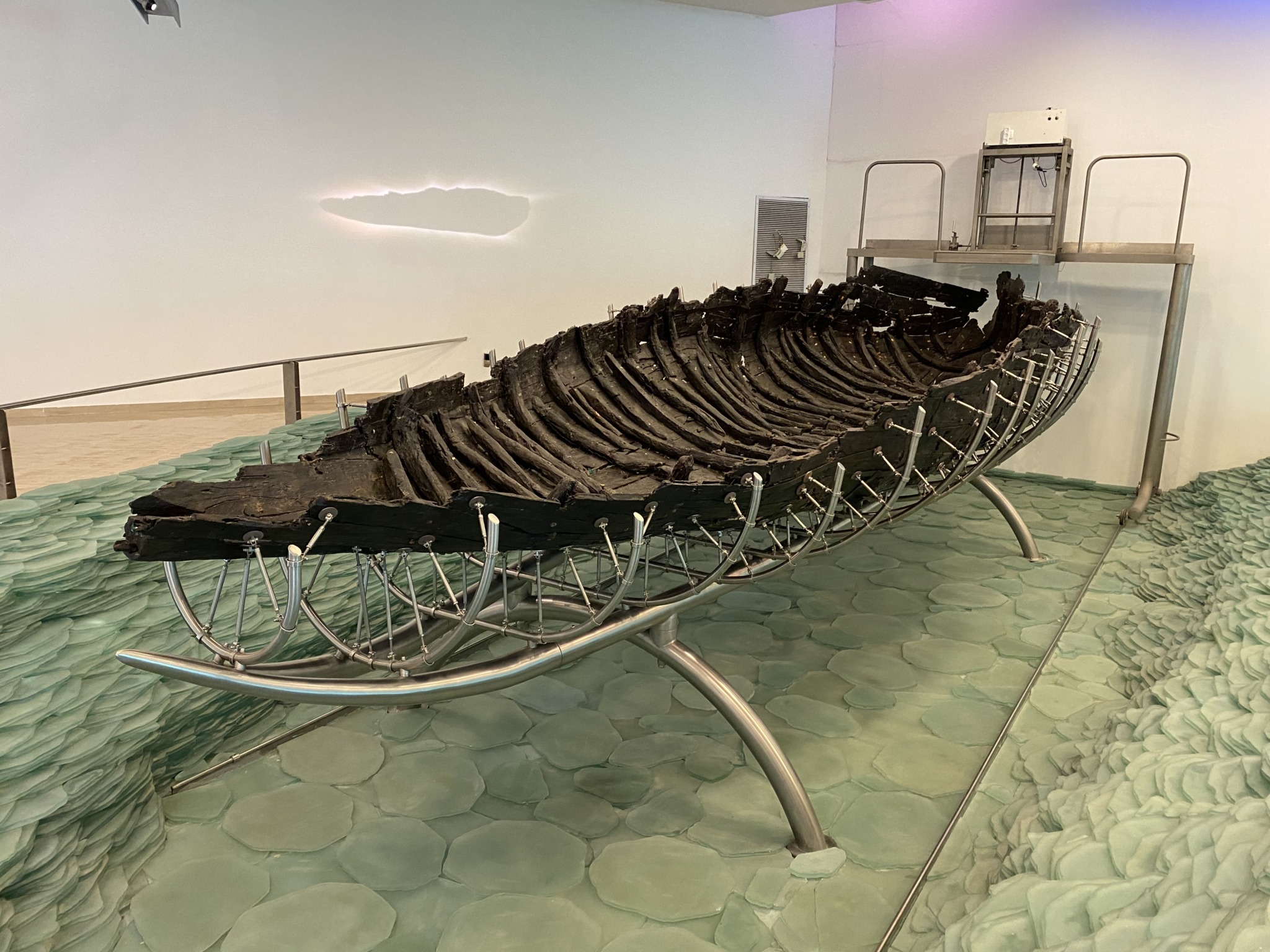
Next, we drove to Capernaum, which is considered by many as Jesus’ home base during his Galilean ministry since it’s mentioned so often in the New Testament.
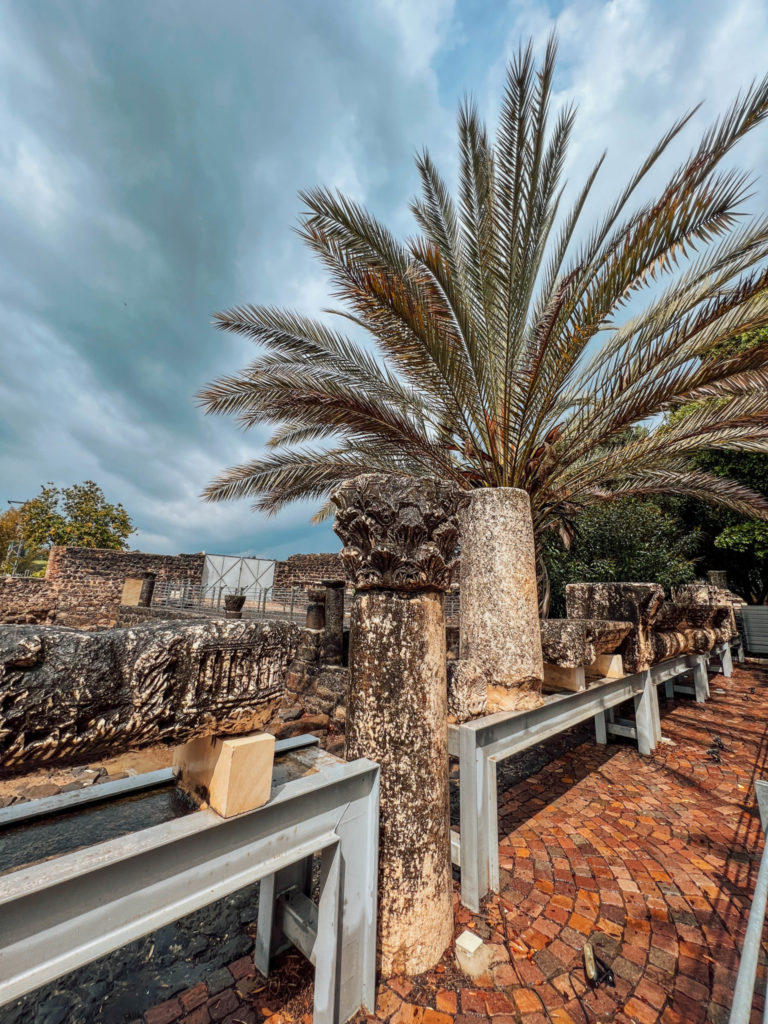
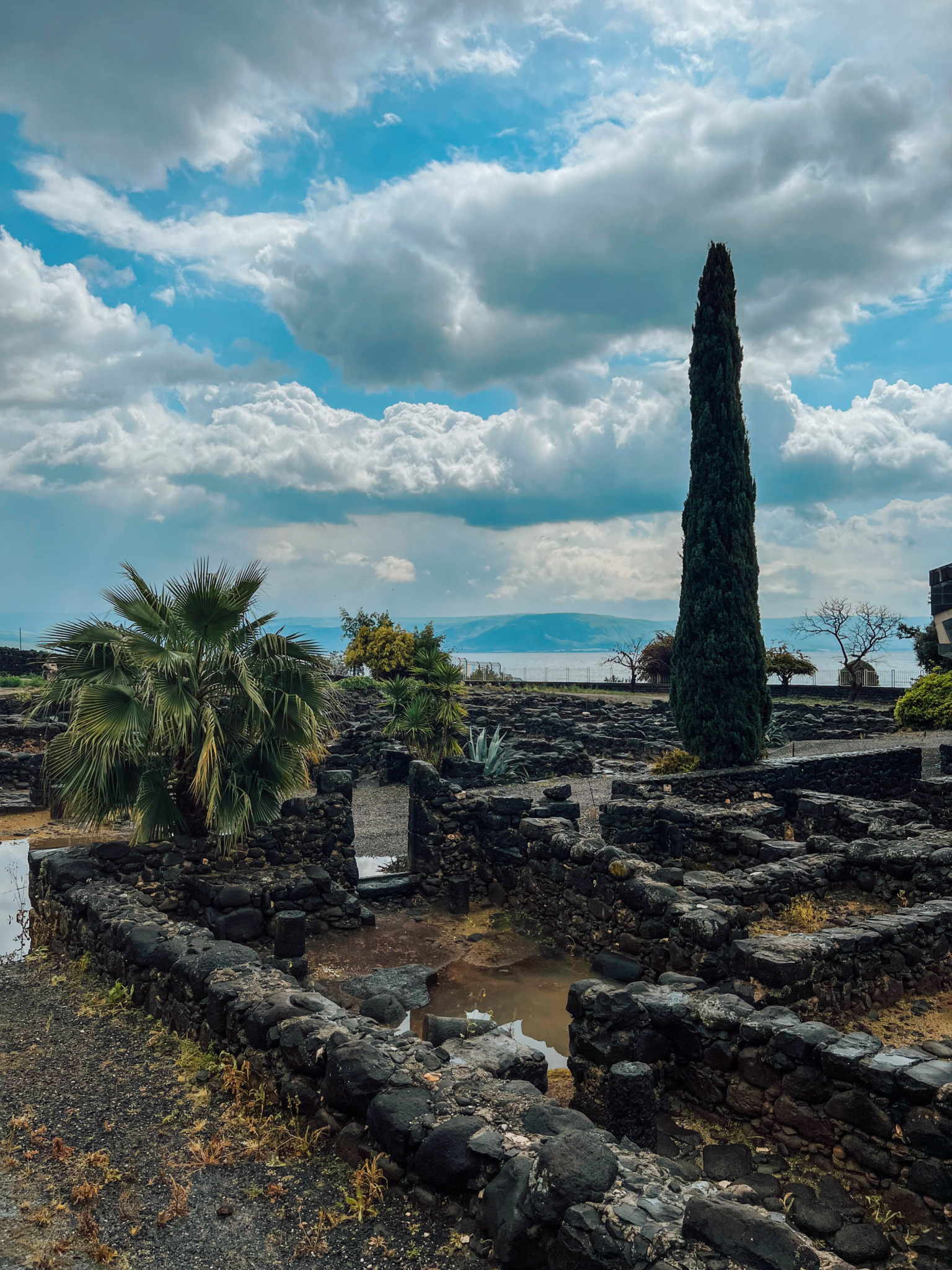
This fishing village was where Jesus was staying, preaching, and performing miracles. The remains that were found are extensive. There are huge temple ruins as well as outlines of homes. Here is where Jesus collected disciples, as Jesus was said to be a fisher of men. All the disciples were fisherman except Matthew, who was a tax collector and Judas who wasn’t from Capernaum.
This is where you’ll find the remains of a synagogue and Peter’s house.
We rounded out our day in the Golan Heights, where we shockingly saw snow on the hillsides!

Golan Heights is a shockingly beautiful place with epic viewpoints and gorgeous landscapes.
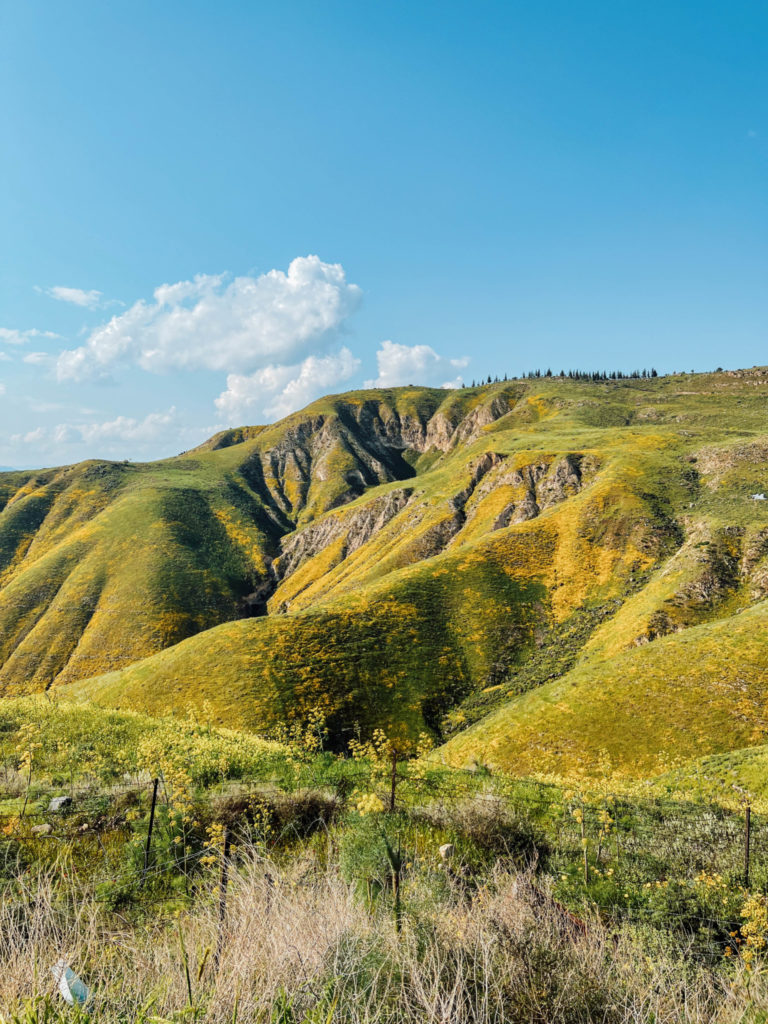
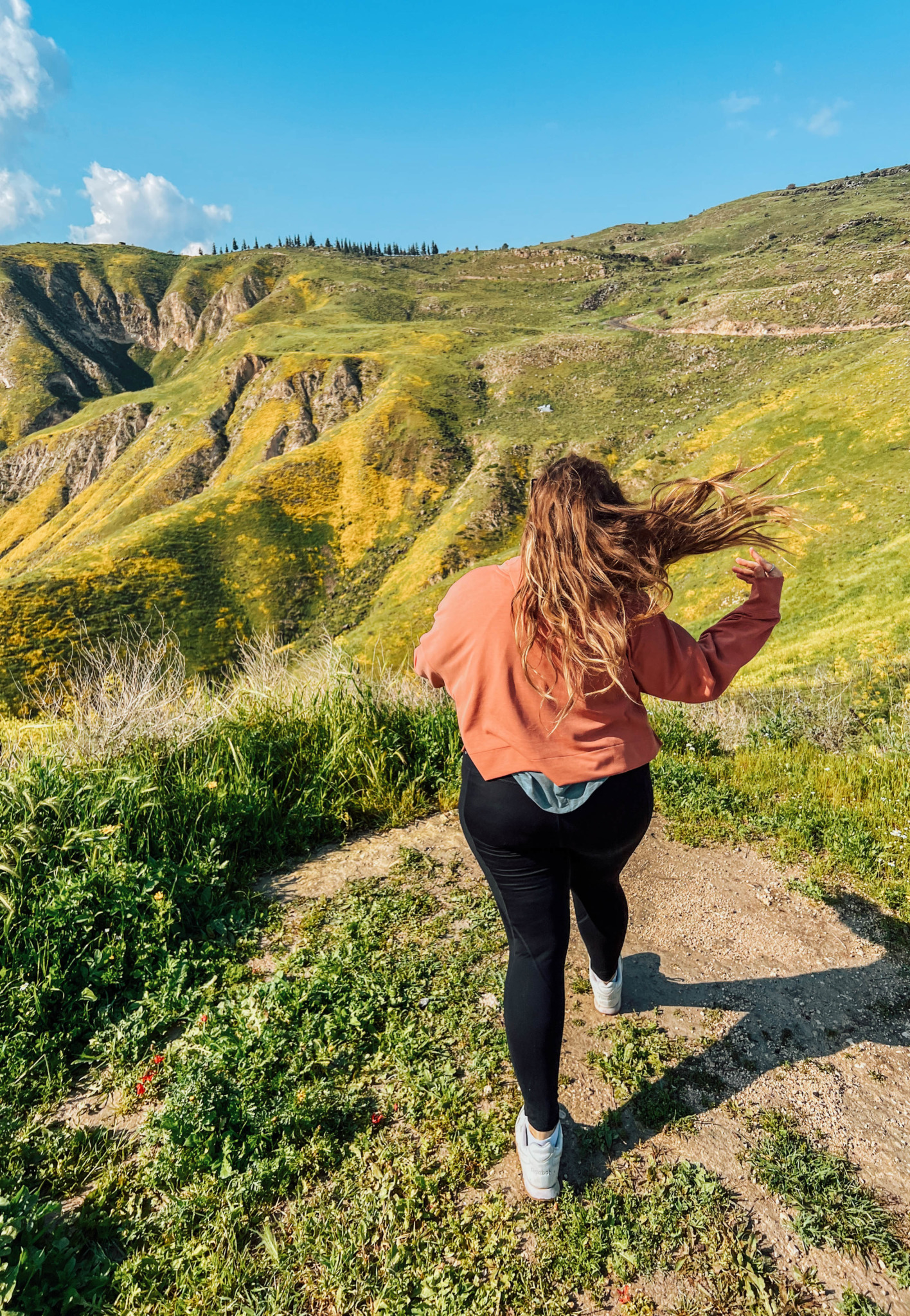
Next we went to a truly moving spot, Eli Cohen Bunker. Today, you can see the former Syrian bunkers that remain on the Golan Heights from 1967 (as well as the tanks from 1973).

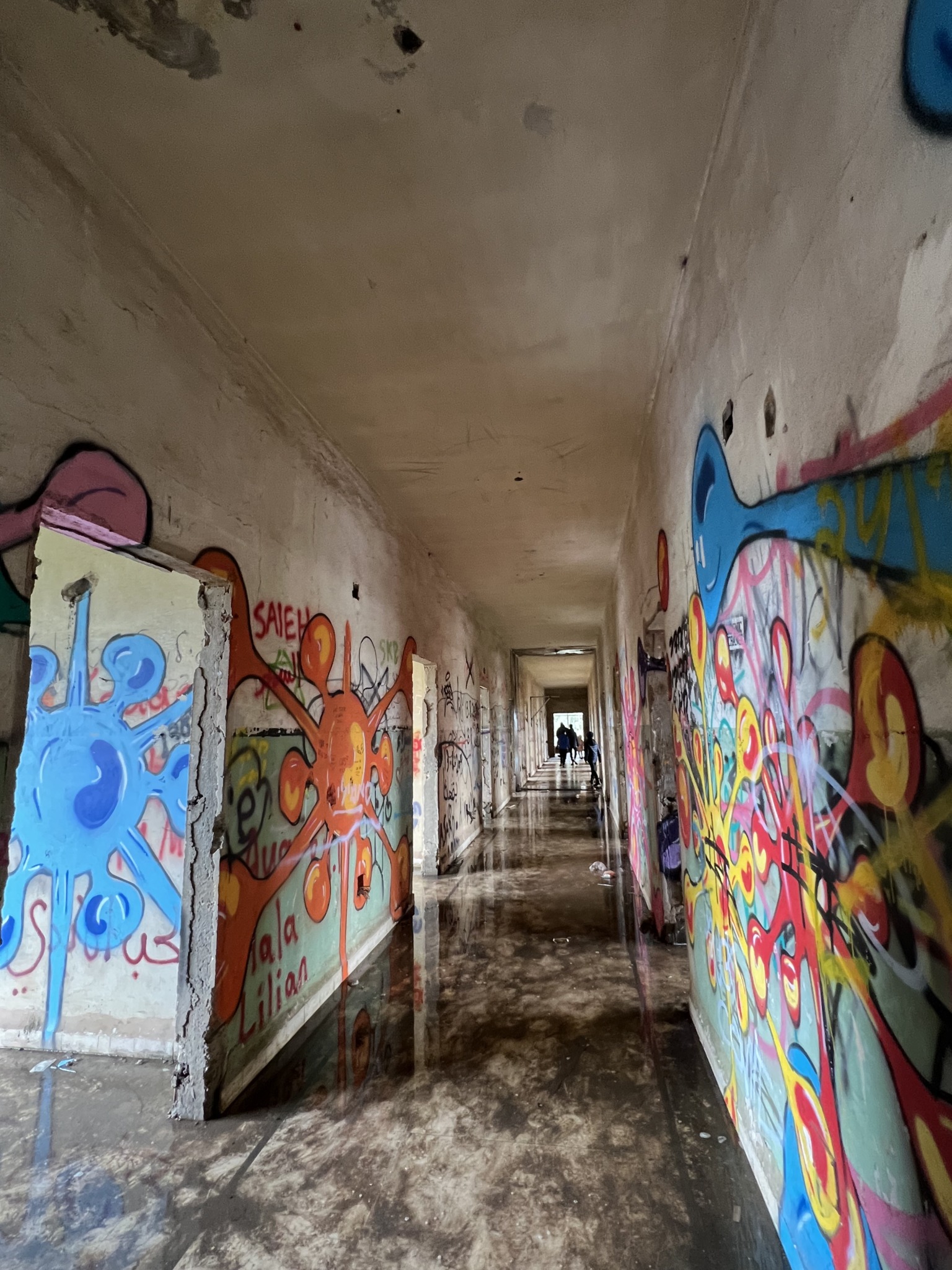
Eli Cohen played a major role in spying for Israel in 1961–65 in Syria, where he developed close relationships with the Syrian political and military hierarchy. (There’s a great Netflix series called “The Spy” that I highly recommend!).
This is an incredibly moving experience to see and learn about what happened here as well as the story of Eli Cohen.
Cap your day off with some delicious hot chocolate at De Karina.
Day 4: Jesus Baptism Site at the Jordan River, The Dead Sea, Qumran
It’s a bit of a dispute as to where Jesus was baptized, we went to the Baptism site in Jordan as well as Israel. But no matter where you are, it’s a moving experience to go to the Jordan River and dip your hand in the water where he was baptized.
A beautiful place to visit in addition to the Baptismal site is Yardenit Baptismal site is a beautiful place where many Christians come to get baptized.
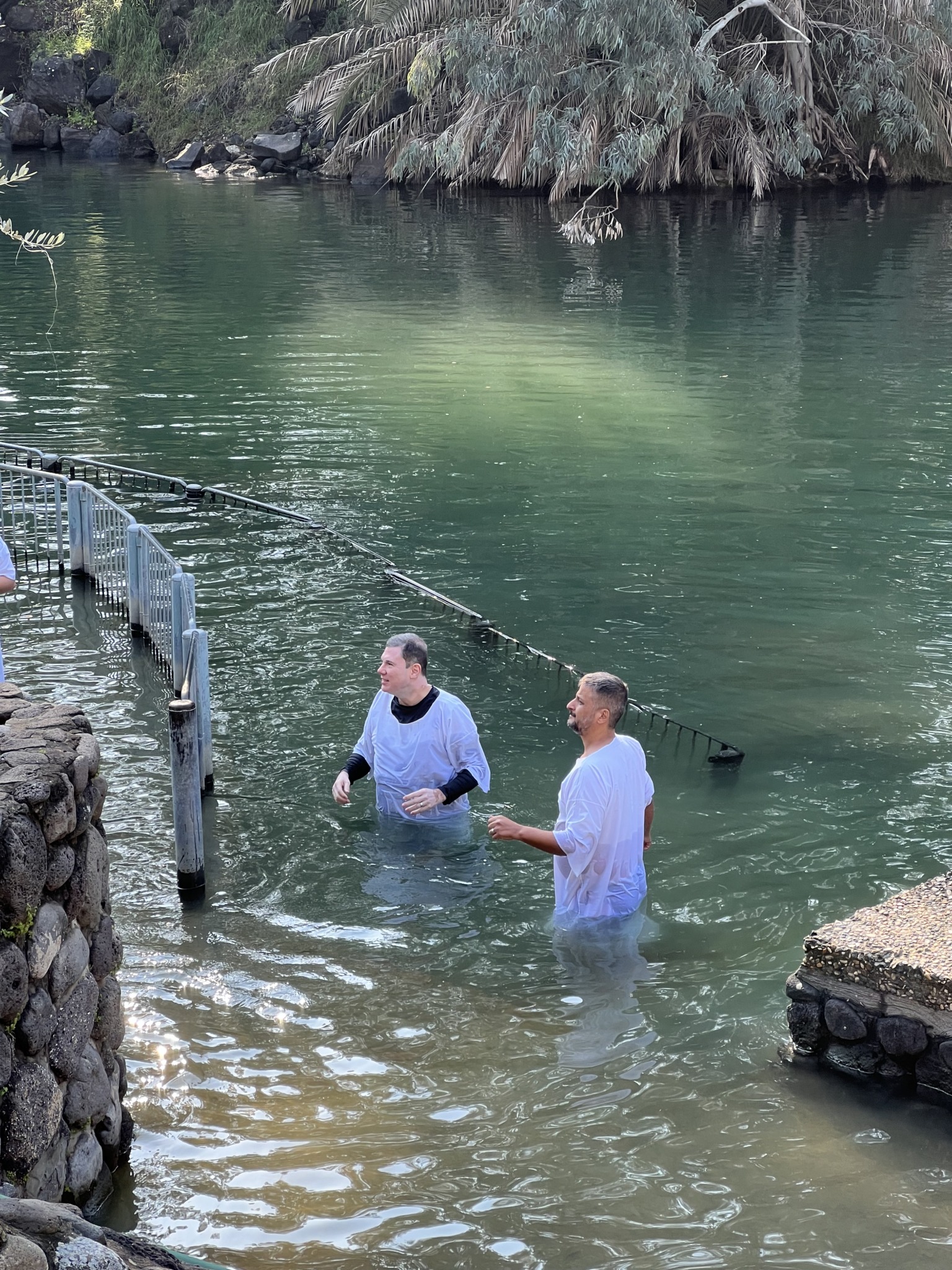
Next, we headed to a Kibbutz, which are communal settlements in Israel here traditionally all wealth is held in common and profits are reinvested in the settlement. Ein Geddi Hotel and Kibbutz has a beautiful botanical garden, spa, and a place for retreats.
The next stop is the famous Dead Sea! The water is incredibly salty and you can’t help but float. In fact, it’s important that you don’t get the water in your mouth!

There’s also black mud that is said to have healing properties. So make sure to cover yourself in it! You can find this mud at most of the spas near the Dead Sea. We headed to Kalia Beach where you can float like a cork and experience the true feeling of weightlessness.

Because the water is so salty, you’ll float easily! You can watch me float here!
Wadi Felt Viewpoint is said to be the setting for Psalm 23:4 “the Valley of the Shadow of Death.” This is a beautiful spot to see the Wadi Qelt gorge.
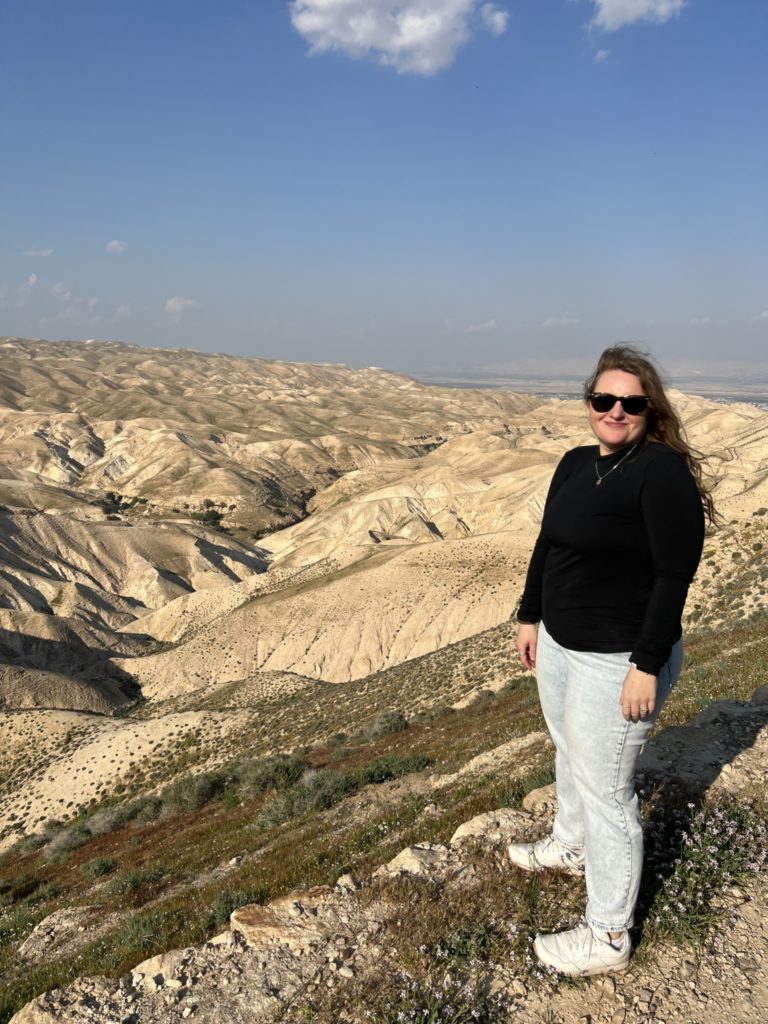
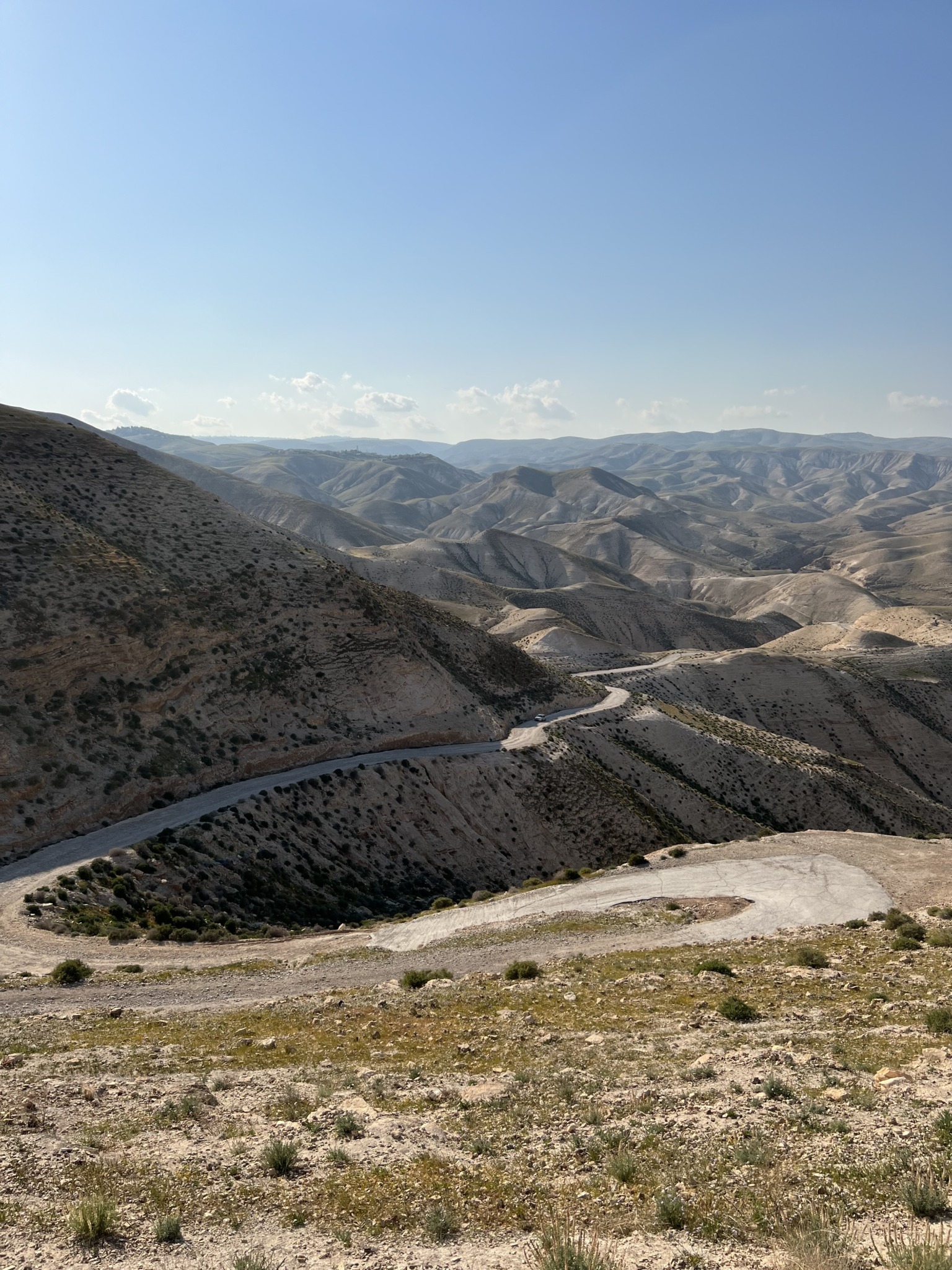
Lastly, we went to Qumran, the place where the Dead Sea Scrolls were discovered!
The Dead Sea Scrolls are a collection of 972 ancient manuscripts that were found in the Qumran Caves in 1947. They are the oldest known copies of the Hebrew Bible and date back to 400 BCE. The scrolls were written by the Essenes, a Jewish religious sect who lived in Qumran from the 2nd century BCE to the 1st century CE.
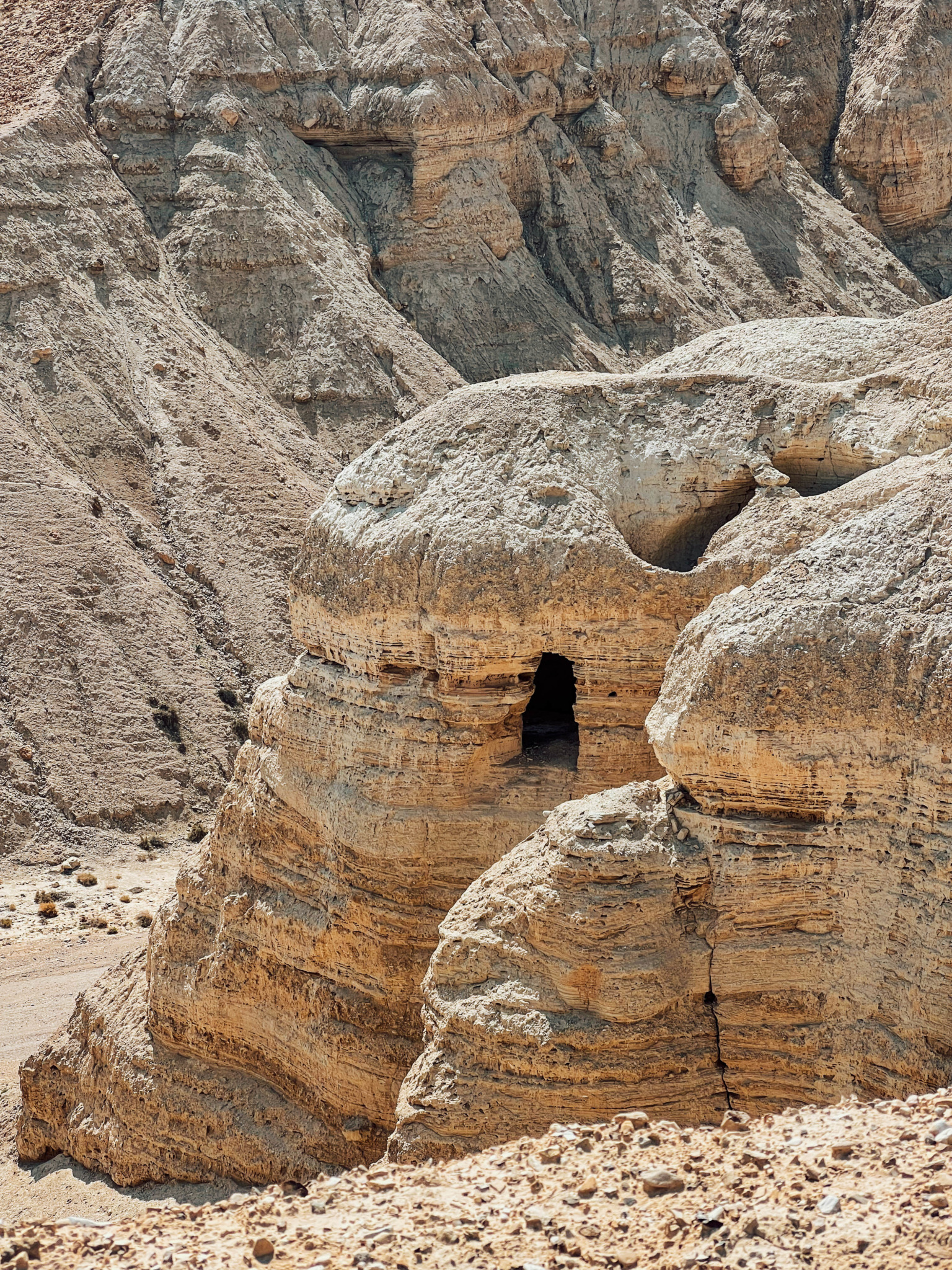
You can see some of the scrolls on display at the Israel Museum in Jerusalem, but it’s really cool to see where they were found!
We ended our day in Jerusalem so we could get up early the next day and explore.
Day 5: Jerusalem
Make sure you leave time for Jerusalem because there’s an immense amount to see. I’d recommend at least 2 days here to get a grasp of everything you need to see and do.
First stop is the Hill of Golgatha. You’ll get an incredible view of the Old City of Jerusalem from here. It’s also known as the place of the Skull because it is said that this is where Jesus was crucified.
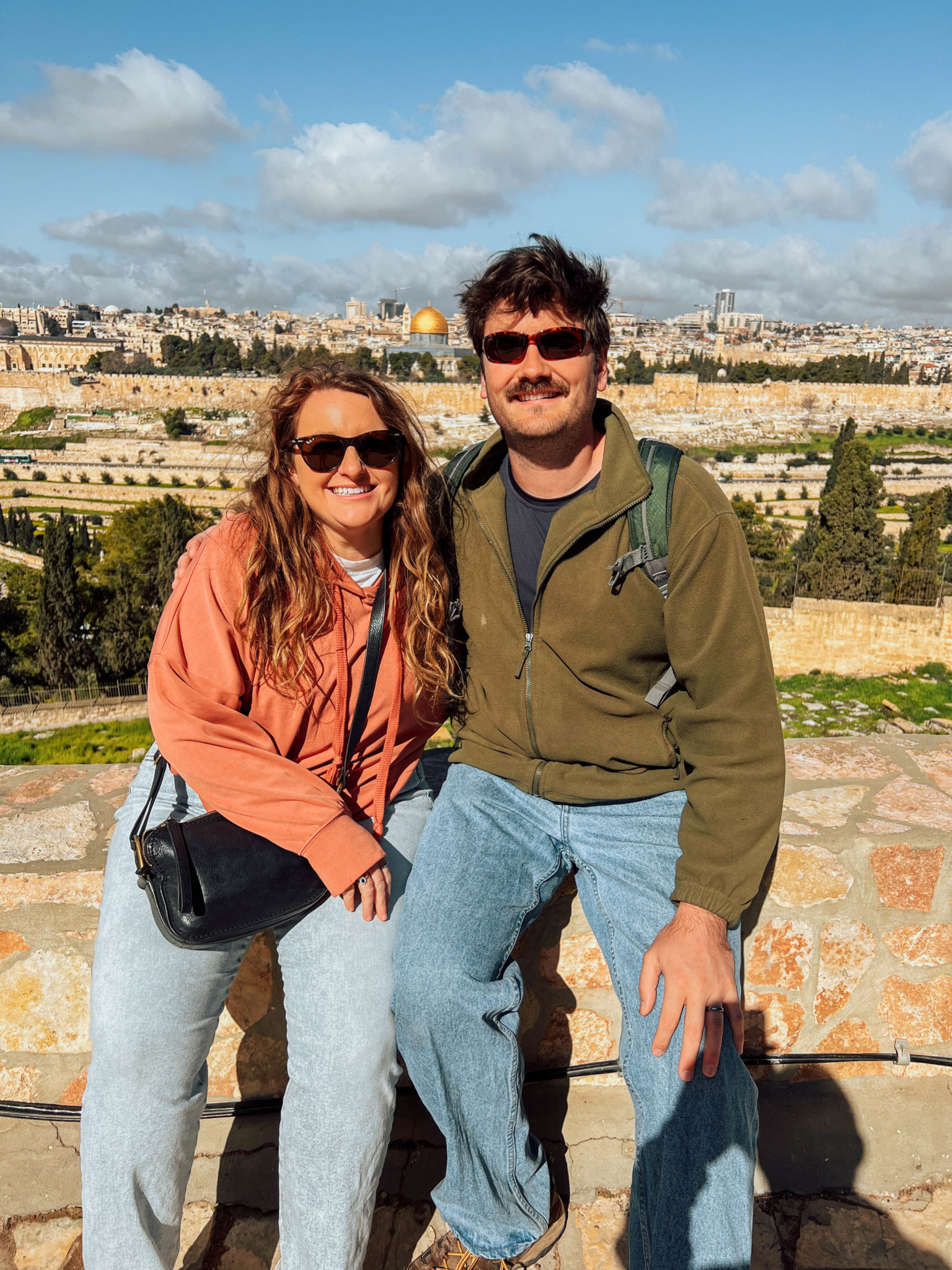
The Mount of Olives is crowded with churches and home to the world’s oldest continuously used cemetery, which makes it a must-see for religious tourists to Jerusalem. Even the nonreligious may enjoy the breathtaking city views from the peak.
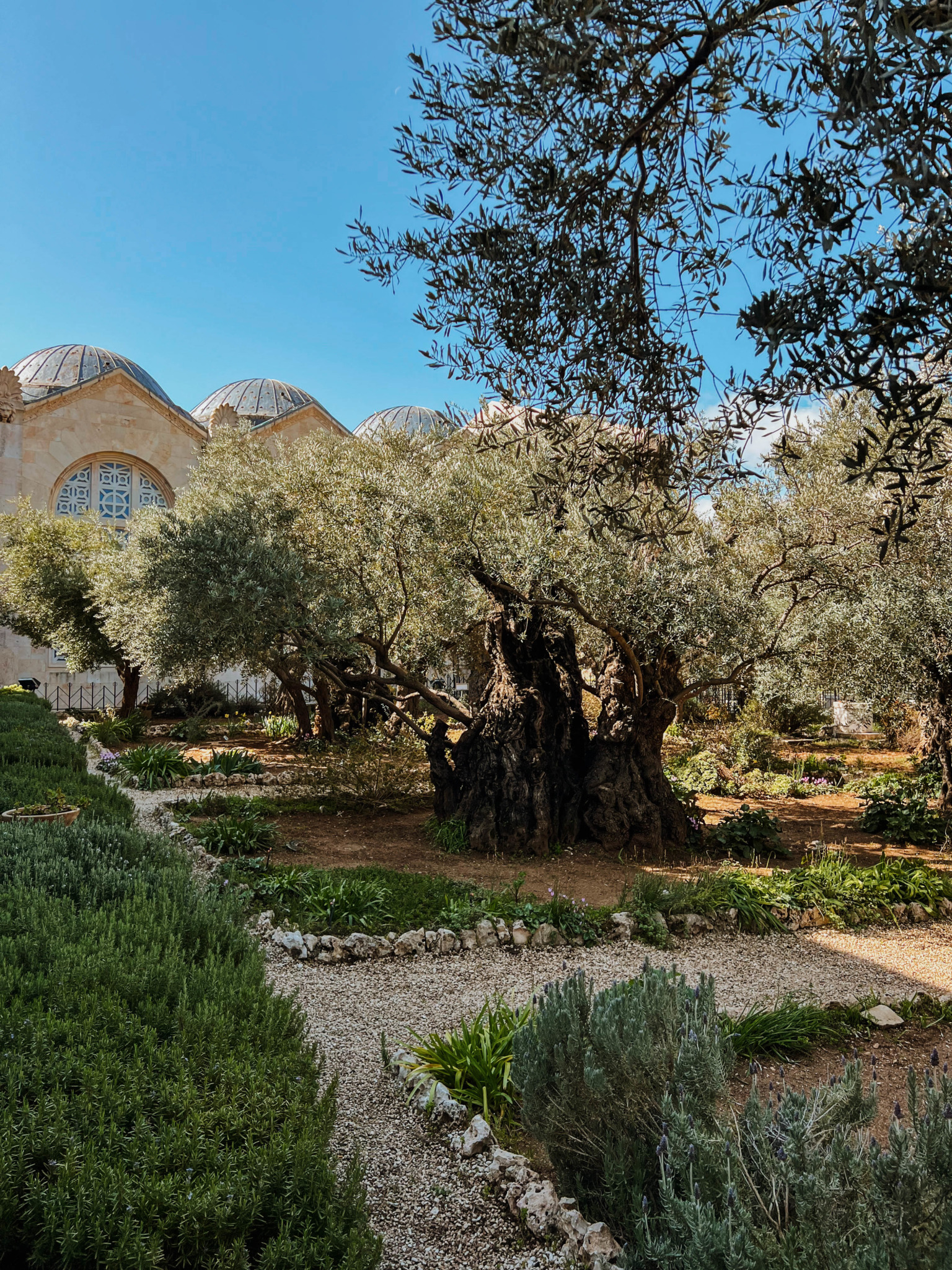
This is where Jesus ascended to heaven after his crucifixion and subsequent resurrection.
The Church of the Ascension, perched on top of the mount, was built in 1910 and offers spectacular views of Jerusalem.
The Church of the Pater Noster, built near to the site where Jesus instructed and gathered his disciples.
Then there is the Church of Dominus Flevit is which is supposedly built over the site where Jesus wept for Jerusalem. Built in 1955 in the ancient Byzantine style by Christian’s, its called the weeping church or the church of the tear, because there are 4 corners that have places for offerings which look like urns or tears.
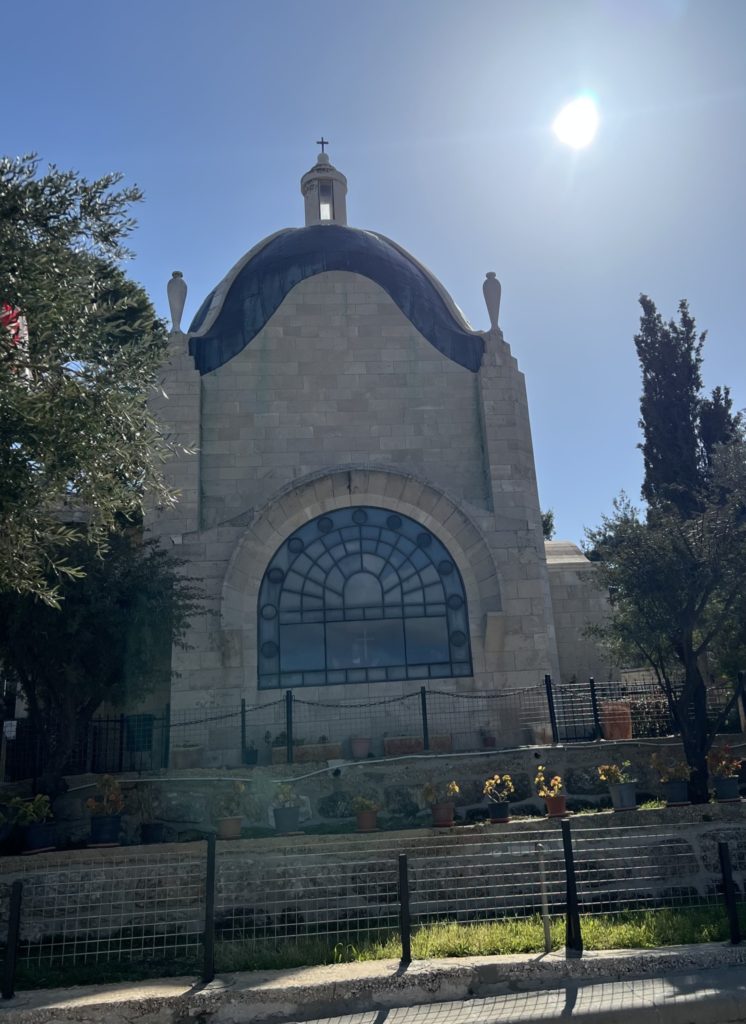

Church of Mary Magdalene is a Orthodox Christian church located on the slope of the Mount of Olives, directly across the Kidron Valley from the Temple Mount. The church was built in 1888 by Tsar Alexander III and his brothers to honor their mother, Empress Maria Alexandrovna of Russia who was killed by Rasputin.
The Gardens of Gethsemane is a beautiful garden among a grove of olive trees thought to be the place where Jesus suffered agony in the garden and was arrested before his crucifixion.
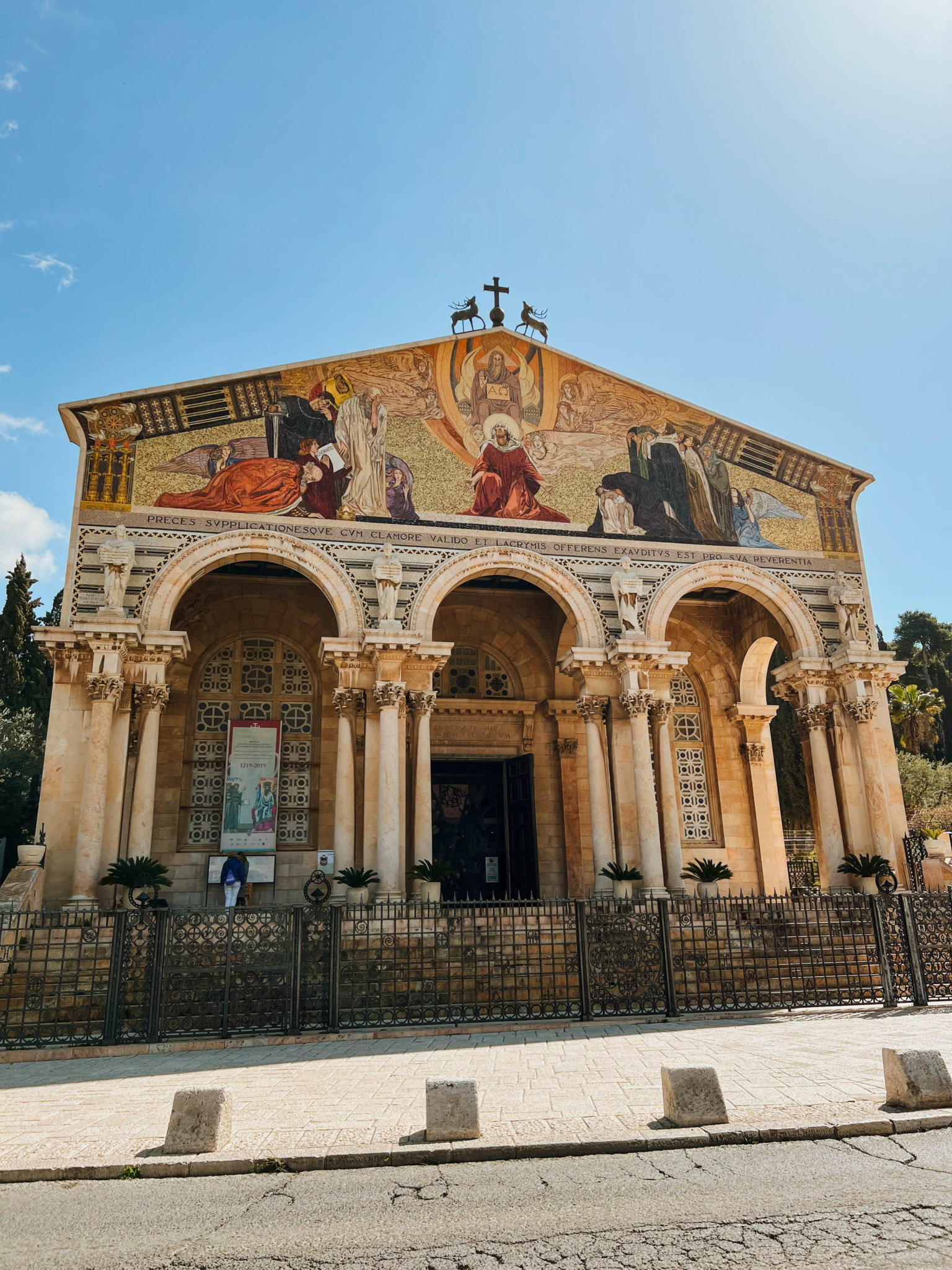
For the Greek Orthodox, the Virgin Mary’s tomb is located in the Church of All Nations. The interior of the church is amazing with hanging lanterns all around.
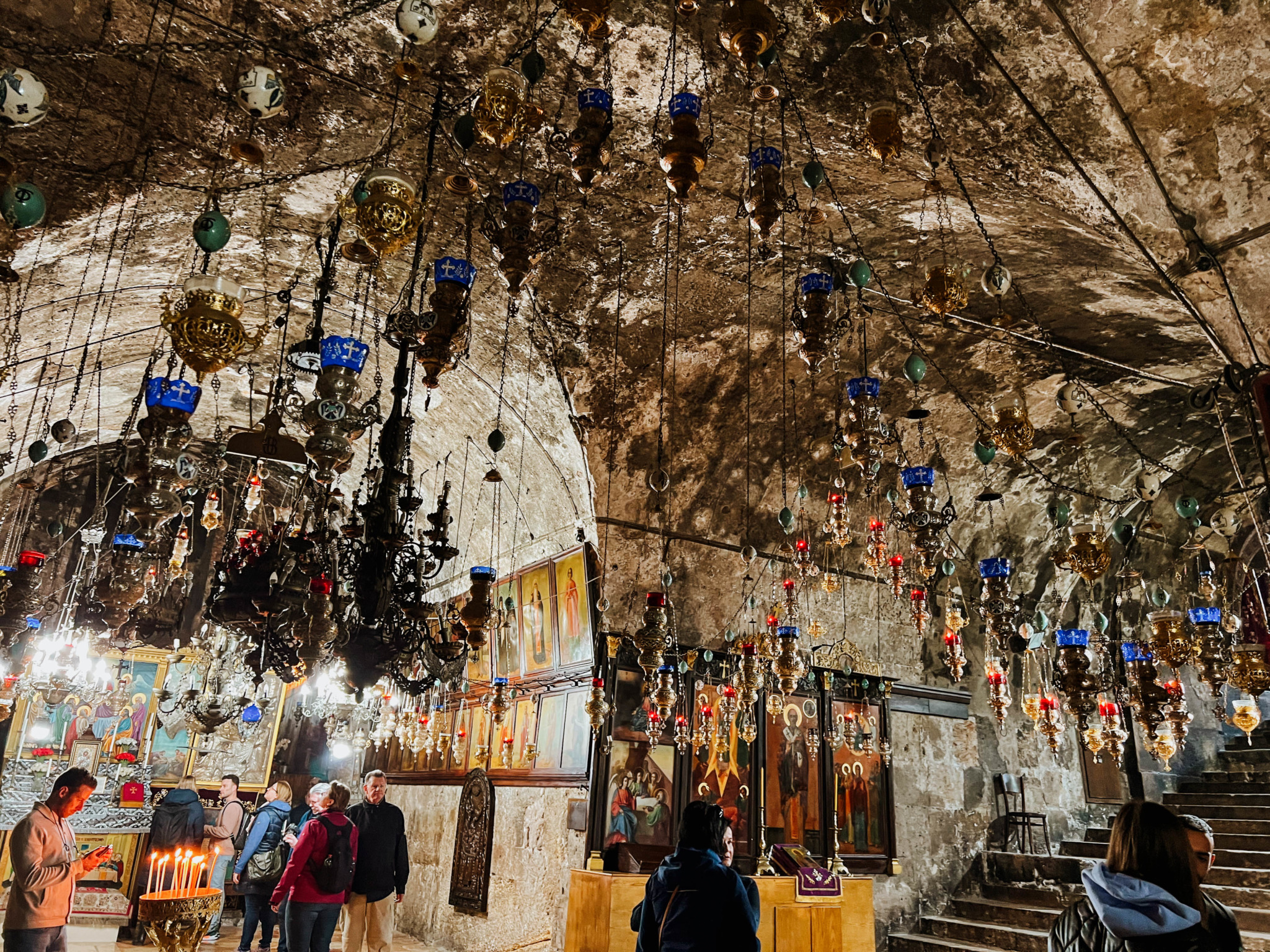
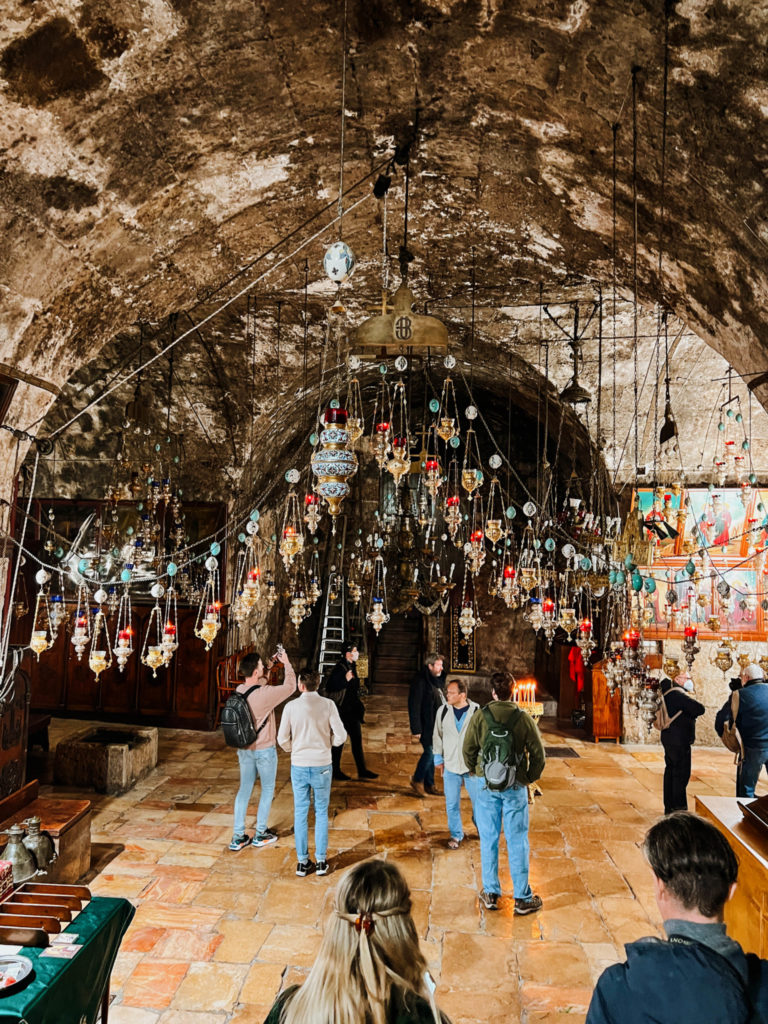

Church of the Holy Sepulchre is perhaps the most important spot for Christians as this is where Jesus died on the cross and was buried and resurrected. Make sure you leave at least 30 minutes to an hour to explore here as you can walk inside Jesus’ tomb and see the slab where he was laid after his crucifixion.
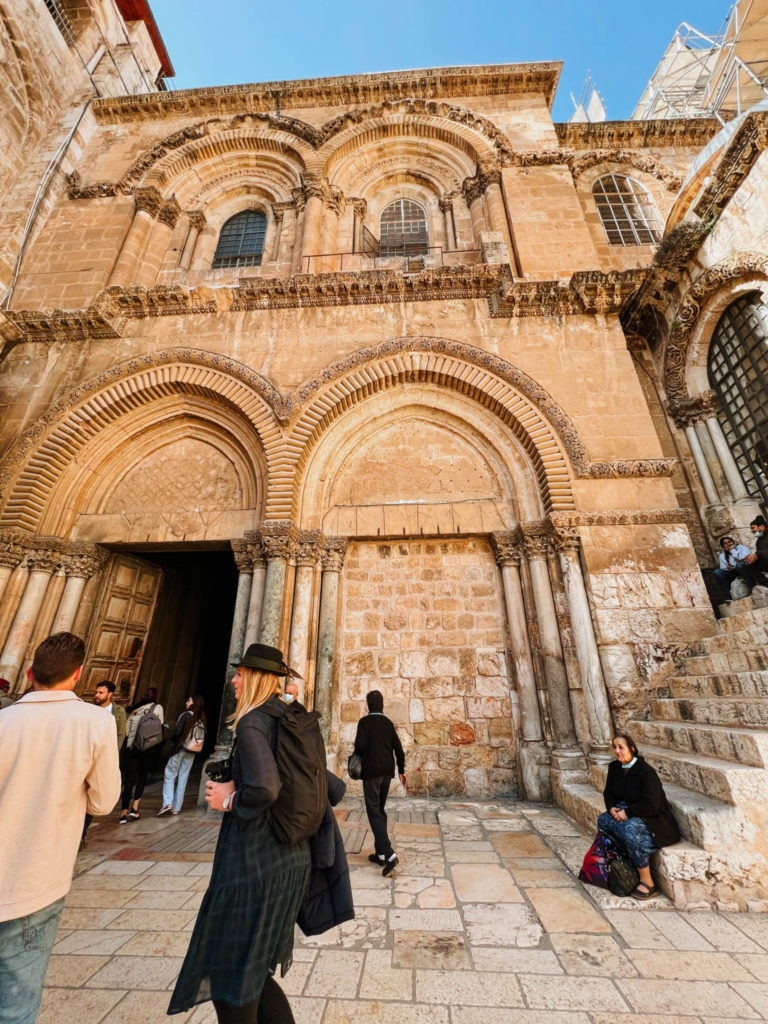
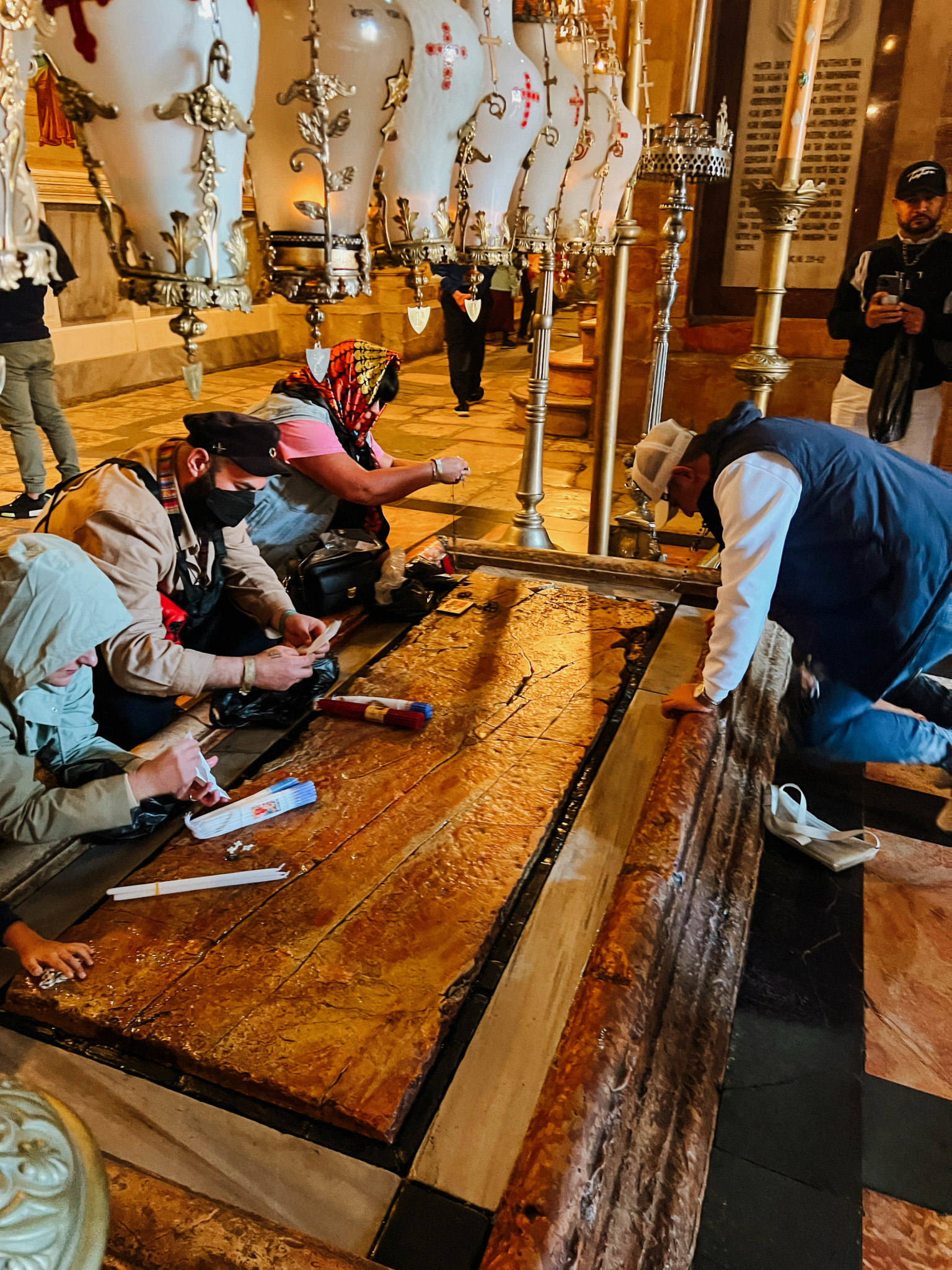
The next stop is the Wailing Wall, or the Western Wall, which is the holiest site in Judaism. It is a remnant of the Second Temple and is a place where Jews come to pray.
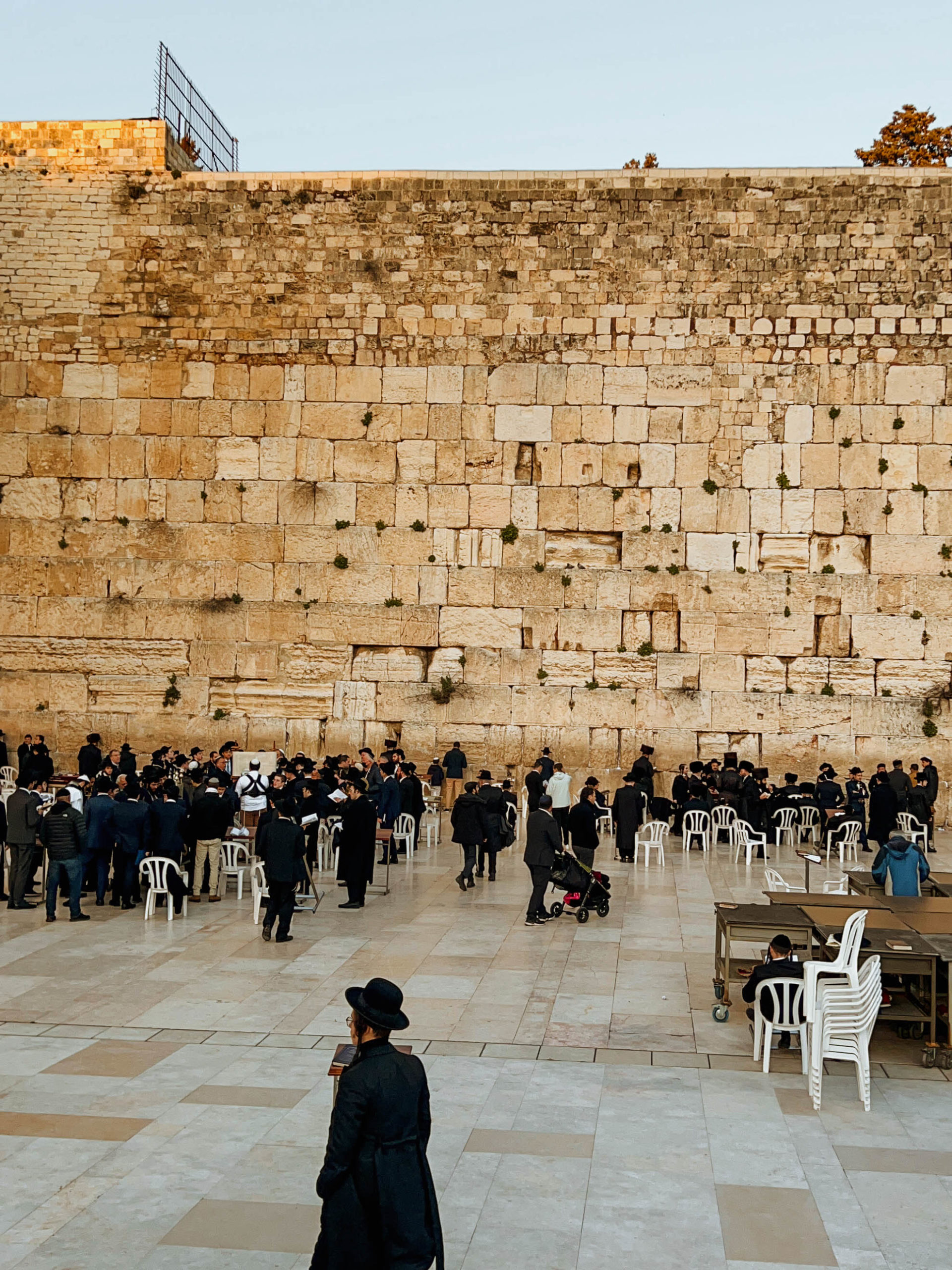
There are separate sides for men and women. You’ll see people praying and placing notes in the cracks of the wall. I recommend writing a note and placing it in the wall yourself. It’s truly a moving experience.
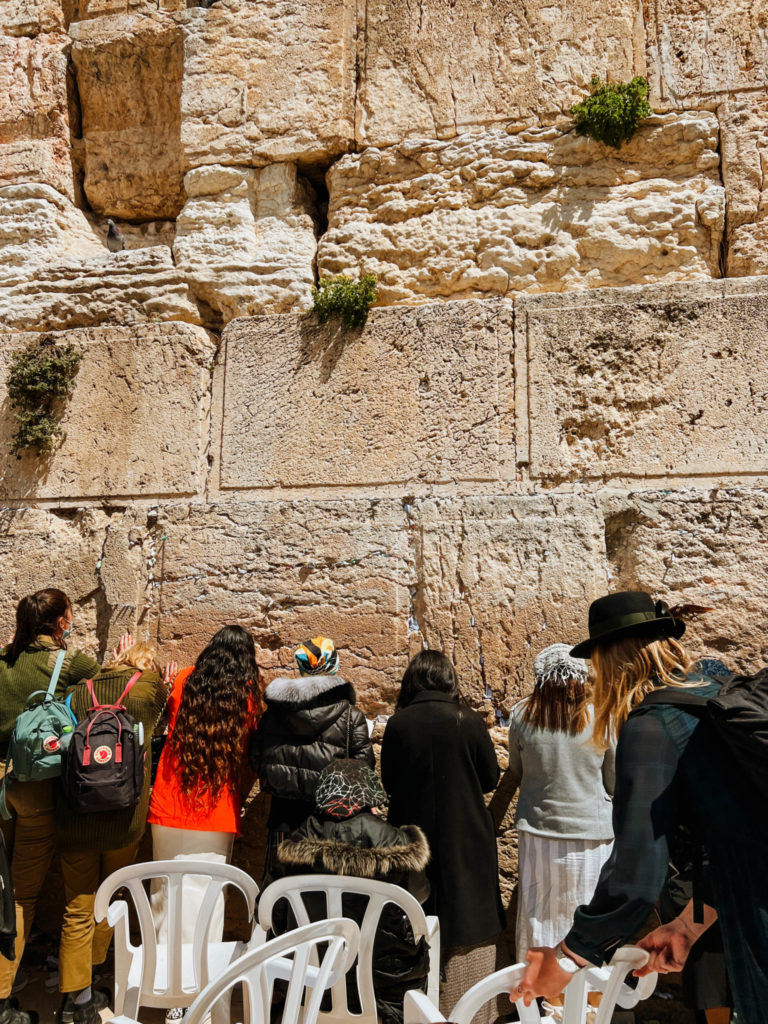
Then we went to the Western Wall Museum. I highly recommend this. In fact, this is one of my favorite things I did on the trip. This underground tour helps give you a much better overview of the history of the wall, the people that come to pray, and why this place is so important.
What we see of the Western Wall is such a tiny amount, going to this museum helps us understand the impact on so many today.
Make sire you head to the Jerusalem Archaeological Park, at the south end of the Western Wall Plaza, where archaeologists have found incredible remnants of old Jerusalem.
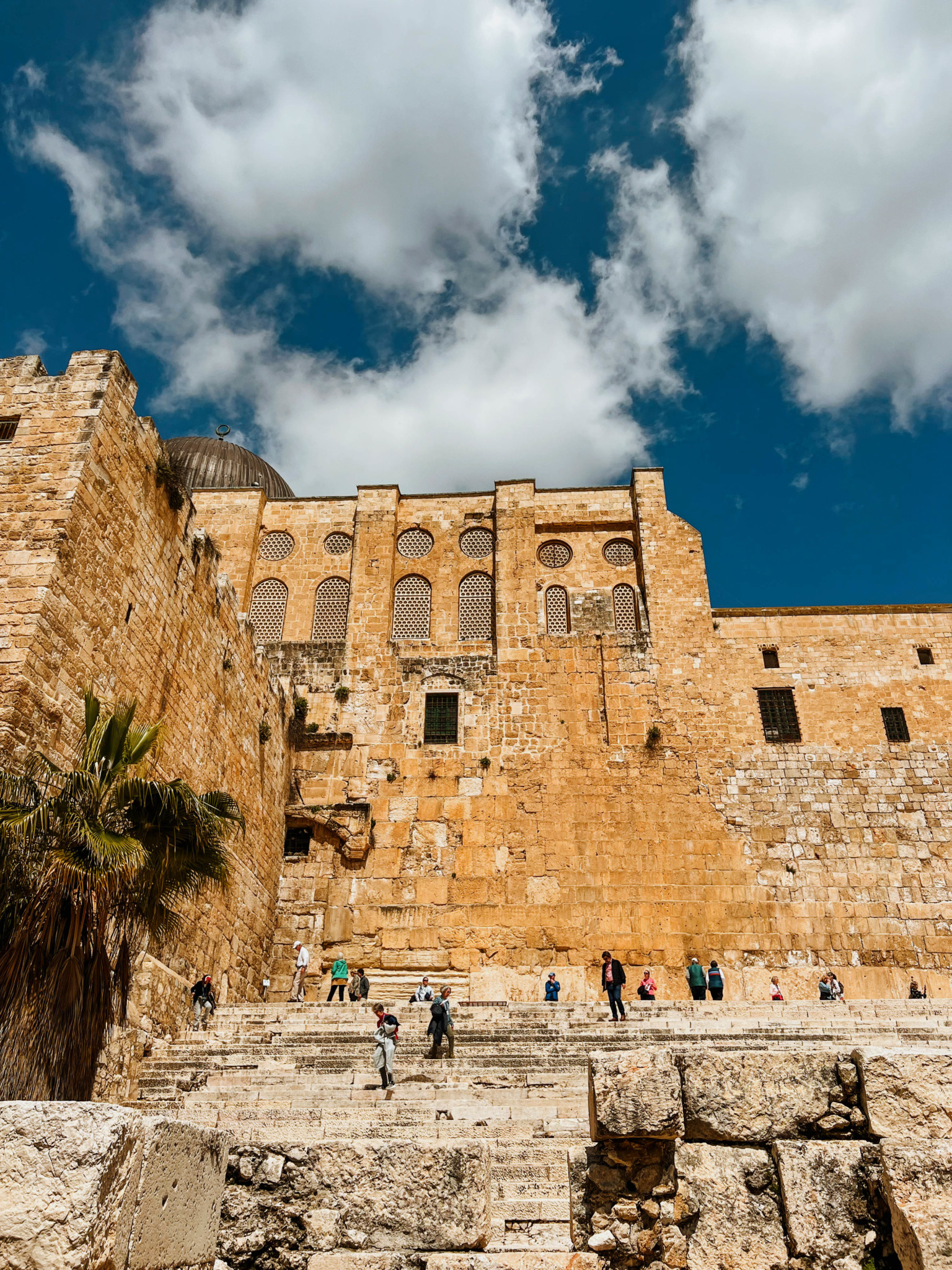
We walked up Via Dolorosa Street, the same pathway Jesus walked to be crucified. This is where you can see the fourteen stations of the cross marked. On the way, you’ll also see the Chapel of Flagellation, Station 2, where Jesus is believe to have been flogged.
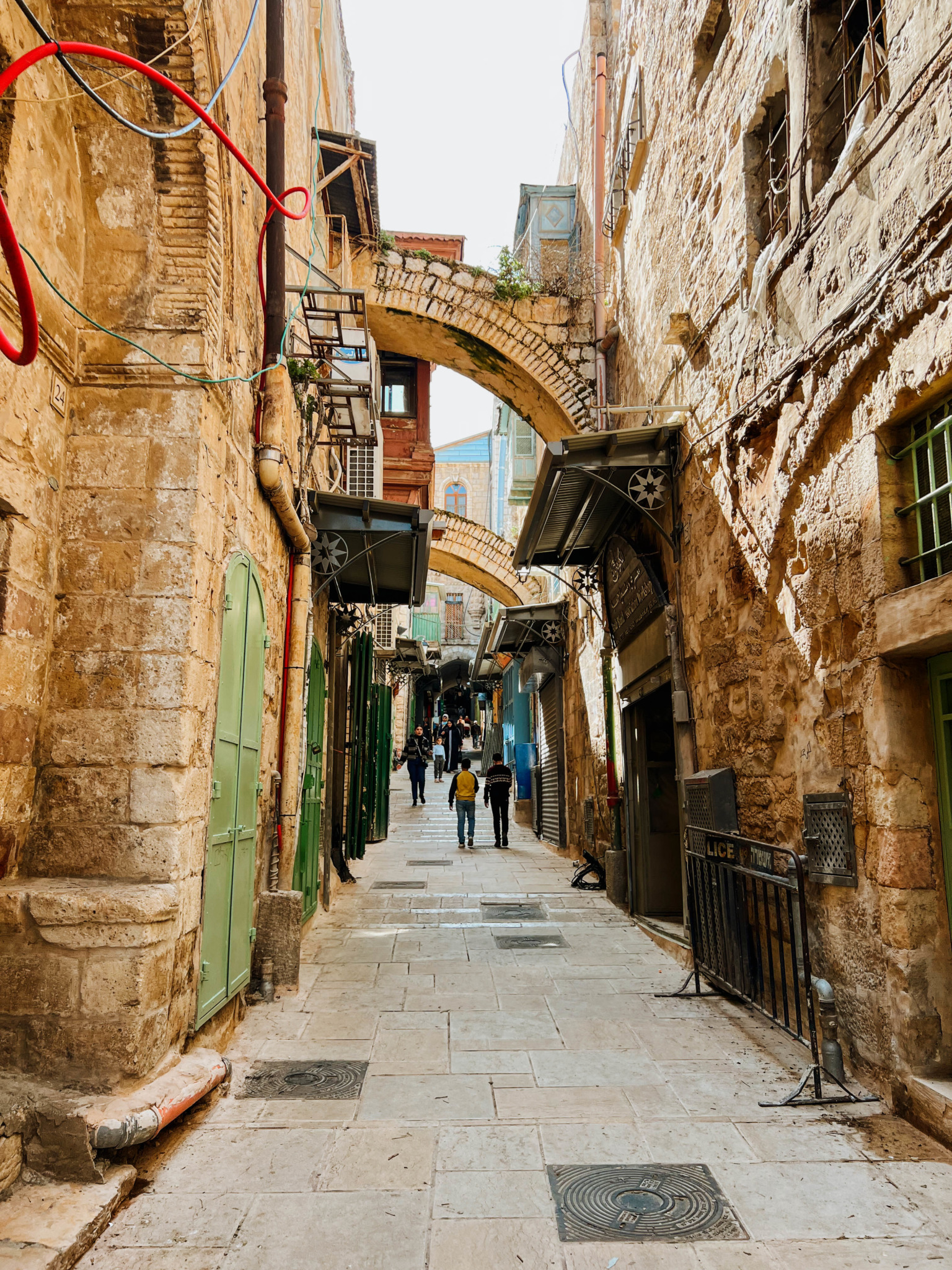
Lastly, stop in the Room of the Last Supper, also called the Cenacle. This is located on an upper floor of King David’s Tomb, this is considered to be one of the holiest sites in Jerusalem.

Day 6: Jerusalem
We spent the early part of the day taking the Rampart Walk. To reach it walk through Jaffa Gate, one of the main Gates to the Old City of Jerusalem. The Rampart Walk is a path that goes along the top of the Old City walls and offers incredible views.
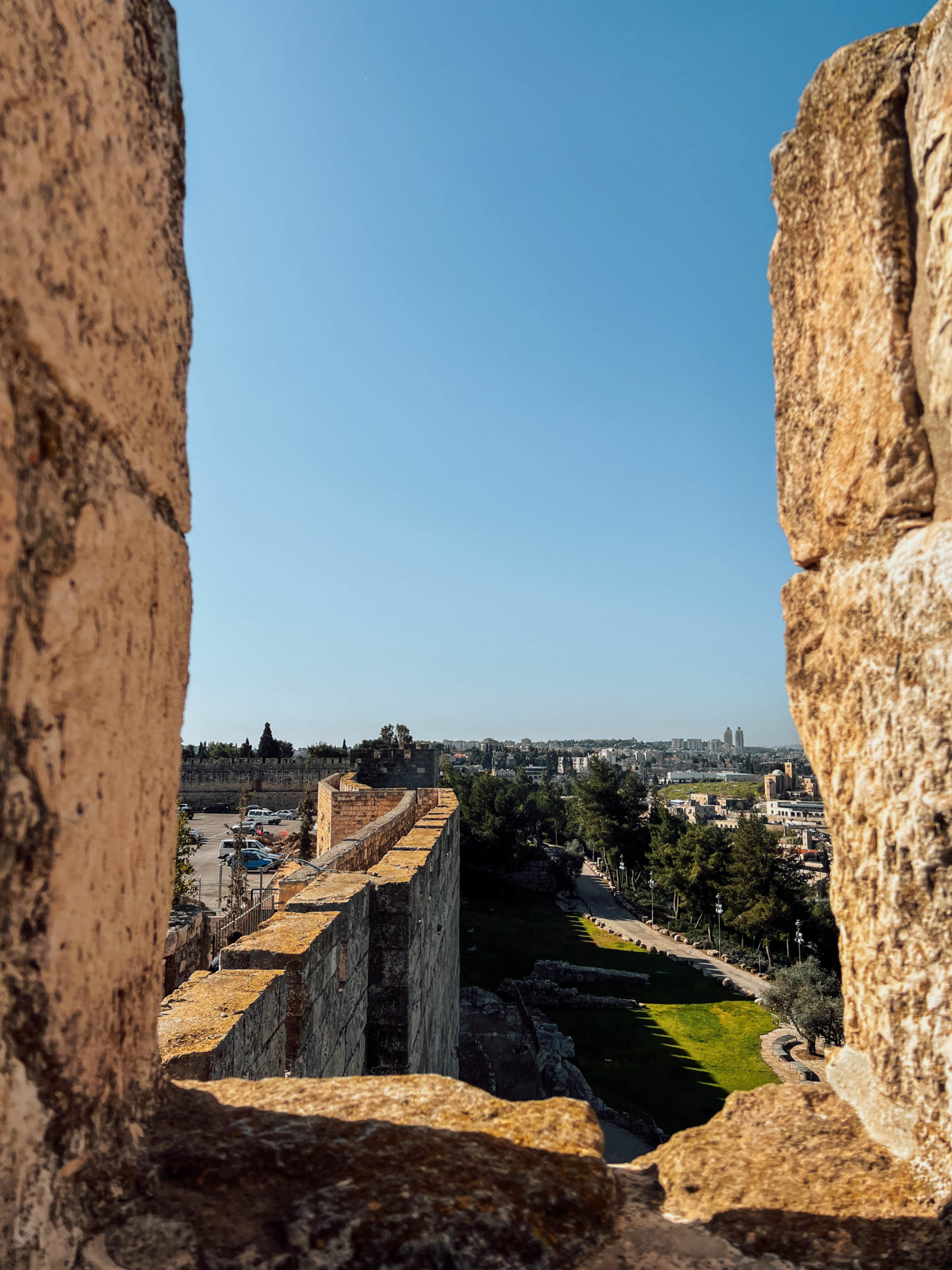
Make sure you stop at one of the several lookout points to get a view of the entire city. You can also see the Mount of Olives and the Dome on the Rock from here.
We then went up to Dome on the Rock. There is a roof on the entrance and you’ll go through security in order to reach the Dome. You cannot go inside unless you’re Muslim, but it’s a beautiful and ornate place to view from the outside.
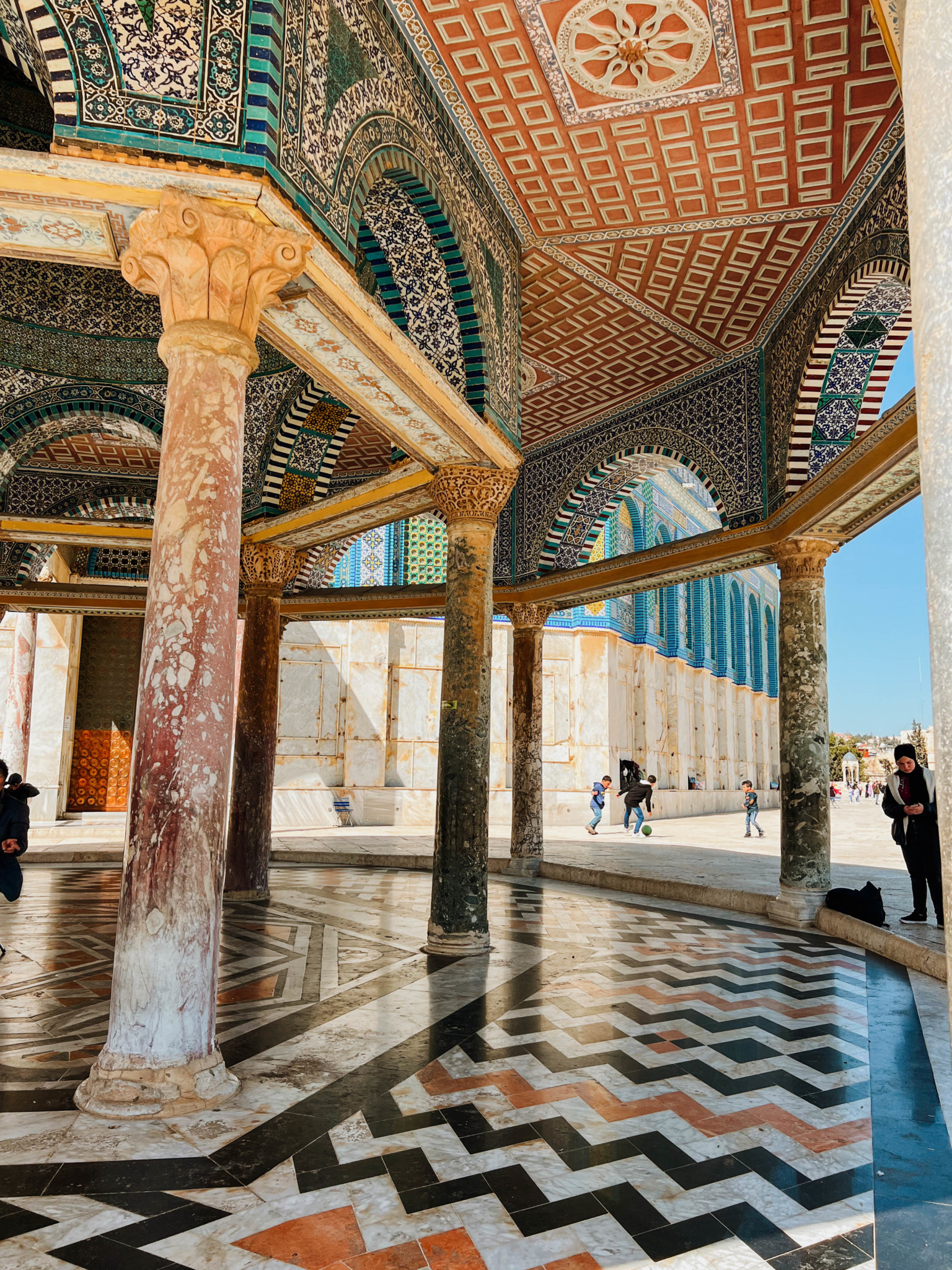
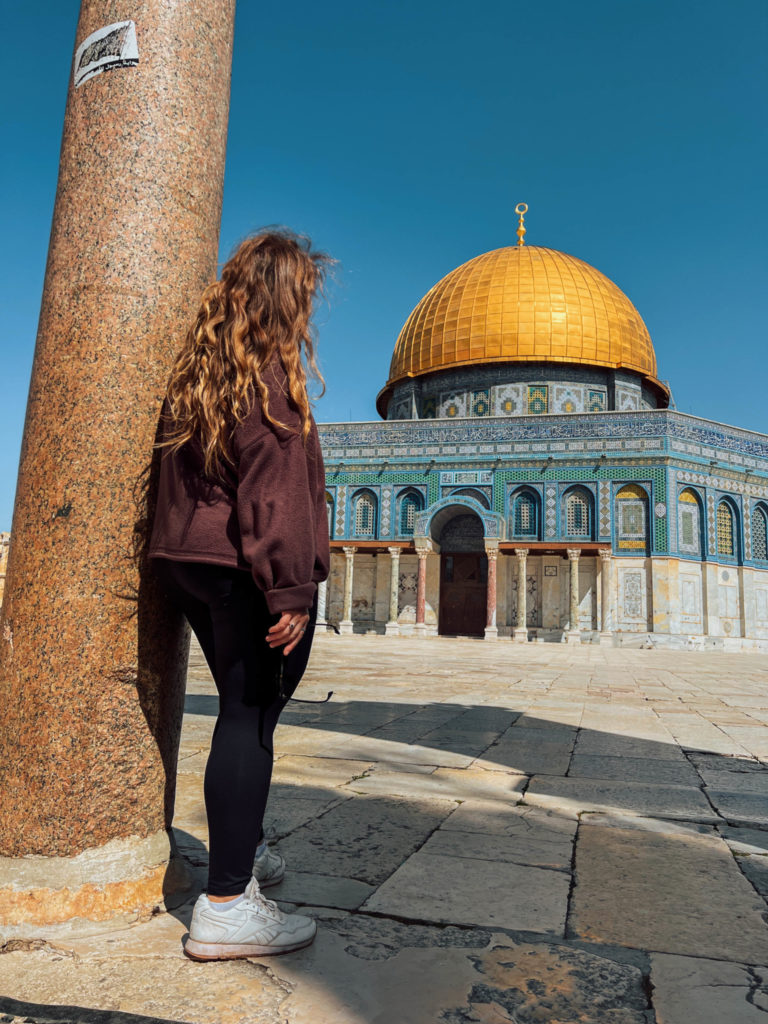
According to Jews, Christians, and Muslims, this is the spot where Abraham (father of all three monotheistic faiths) offered his son as a sacrifice to God, where Solomon constructed the First Temple for the Ark of the Covenant, and where Prophet Muhammad is said to have ascended to heaven during his early years of preaching Islam.
It is a holy site for people of faith, and it’s been the scene of many a religious quarrel over who rightfully owns this area.
Jerusalem’s most famous monument, the Dome of the Rock, is encircled by a vast plaza that extends south from the Old City. The sacred stone under the golden dome where Jews and Muslims believe Abraham offered his son to God and where Muslims believe the Prophet Muhammad began his journey to heaven.
The Al-Aqsa Mosque, on the southern slope of the mount, is one of the world’s oldest mosques.
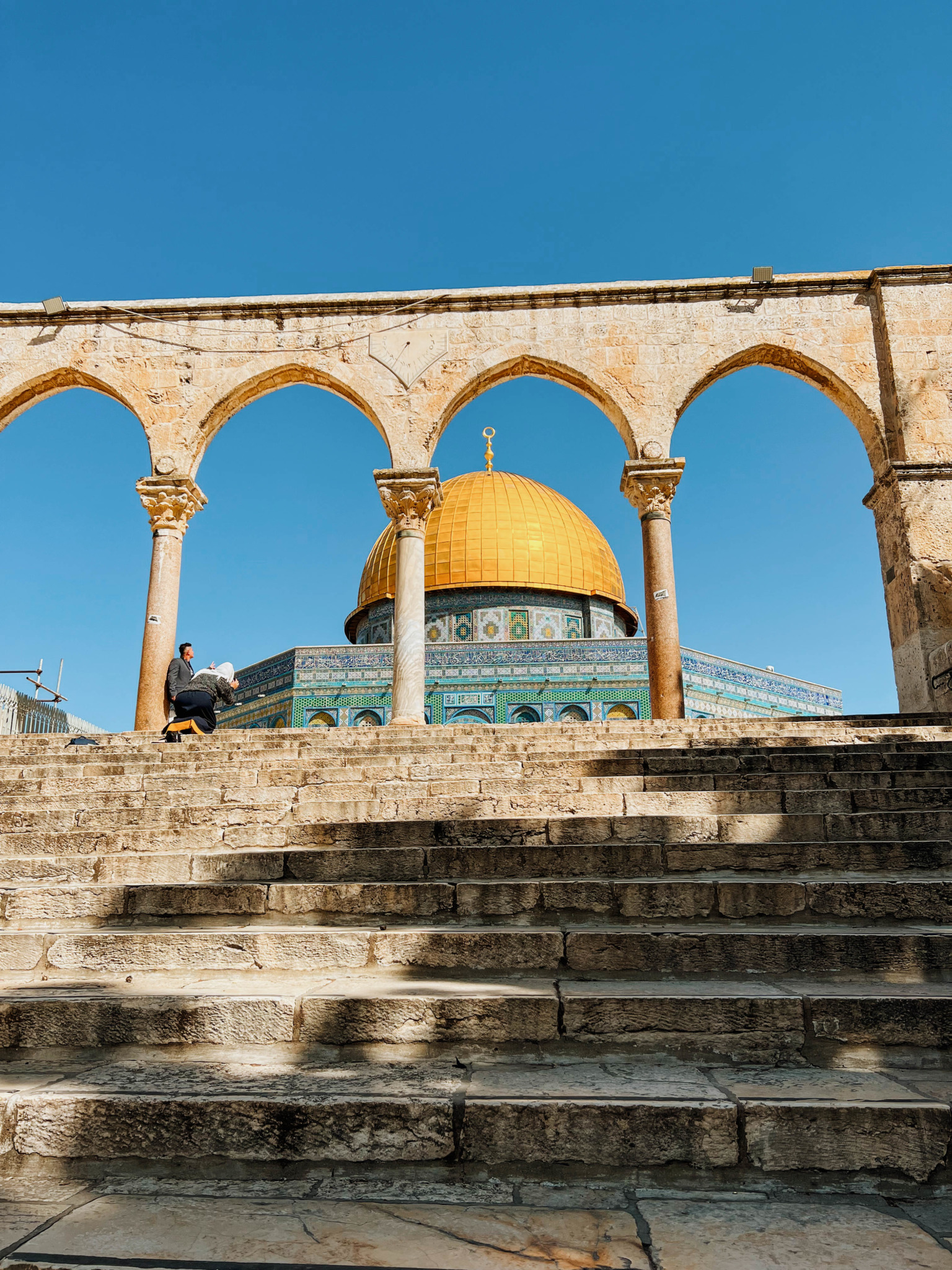
Jerusalem is broken up into different quarters: Christian, Muslim, Jewish, and Armenian. Despite being tightly packed, they each are distinct from one another. Make sure to leave time to visit each.
The Armenian Patriarchate Road is the main thoroughfare of the Old City’s tiny Armenian Quarter. The St. James Cathedral and St. Mark’s Chapel can be found within the winding pathways of this district, which receive significantly less traffic than other sites in the city.
Cap the day off by heading to the Israel Museum. This houses incredible collections including the Dead Sea Scrolls. I also recommend Yad Vashem museum, which is a memorial complex to Holocaust victims. A moving and important museum that share stories, memories, and the resilience of the Jews during the Holocaust.
Jerusalem is vast and there’s so much to see and do in this one city. I spent two days but could have easily stayed more. We headed back to Tel Aviv that night and spent the night here.
Day 7: Tel Aviv
On our last day we explored more of Tel Aviv! Since Jerusalem is stepped in religious history, this was the best way to end the trip. We explored Carmel Market, one of the oldest and most popular markets, or Shuk Hacarmel, in Tel Aviv.

You’ll find spices, nuts, dried fruit, olives, cheese, fish, meat, and much more. It’s a great place to do some souvenir shopping for foodie friends back home.
Make sure you get some pomegranate juice, halva, and, you really can’t leae without trying “malawach.” The lively and delicious malawach stand is a place I recommend you go back to again and again! This is a Yemenite dish served on a spongy bread called lachuch with tahini, tomato, egg, meat and spices.
Also, make sure to try the cauliflower! It’s delicious!
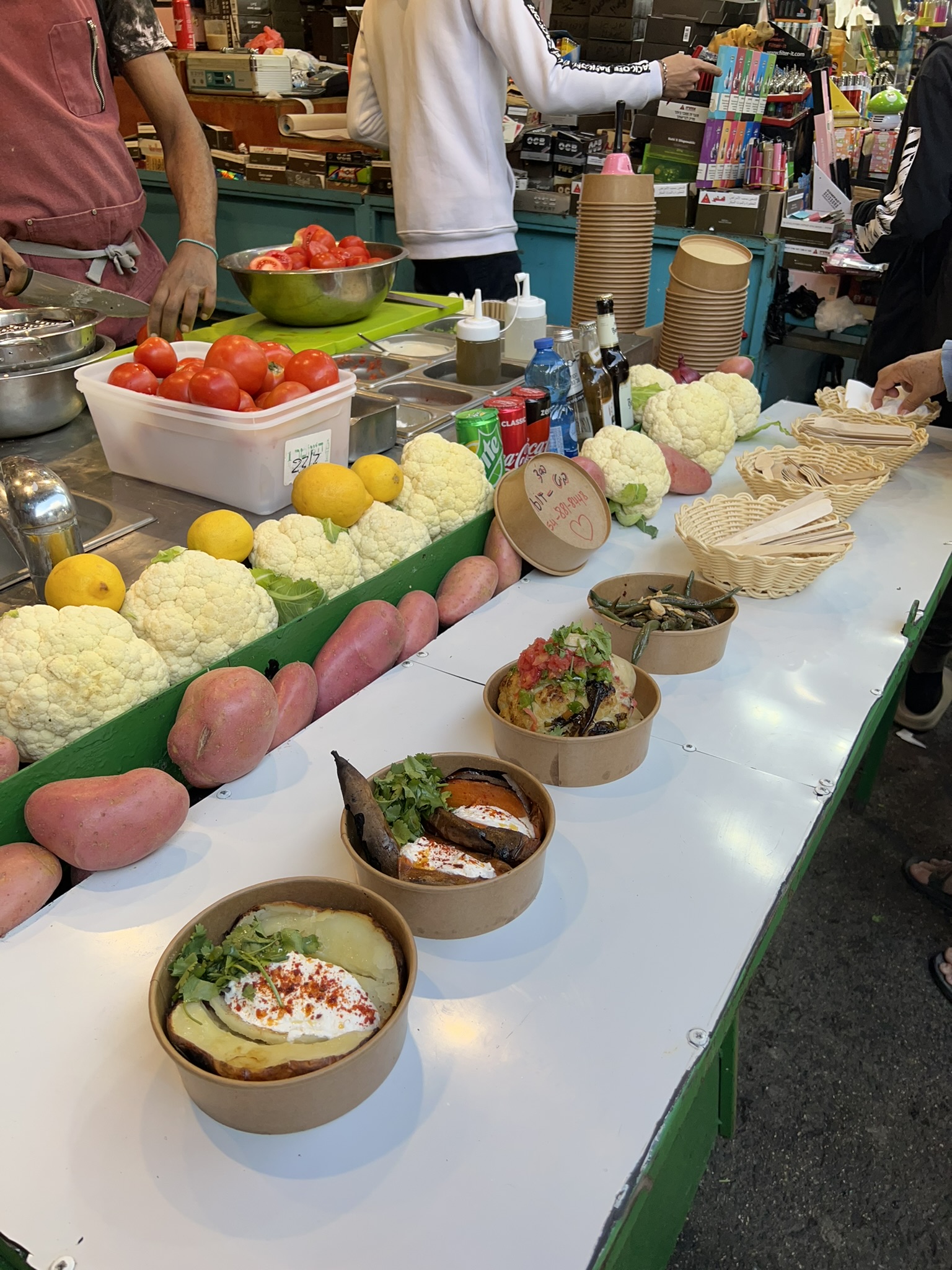
Check out the Tel Aviv Museum of Art. the leader for Israel’s contemporary art scene with works from Picasso, Van Gogh, Degas, Monet and more!
Stroll Rothschild Boulveard to see some of Tel Aviv’s finest Bauhaus architecture. Make sure to pop in to different cafes, restaurants, boutiques, and even hidden bars!

Leave some extra time to take in the beach at sunset or relax at one of the beach bars. Its the best way to unwind!
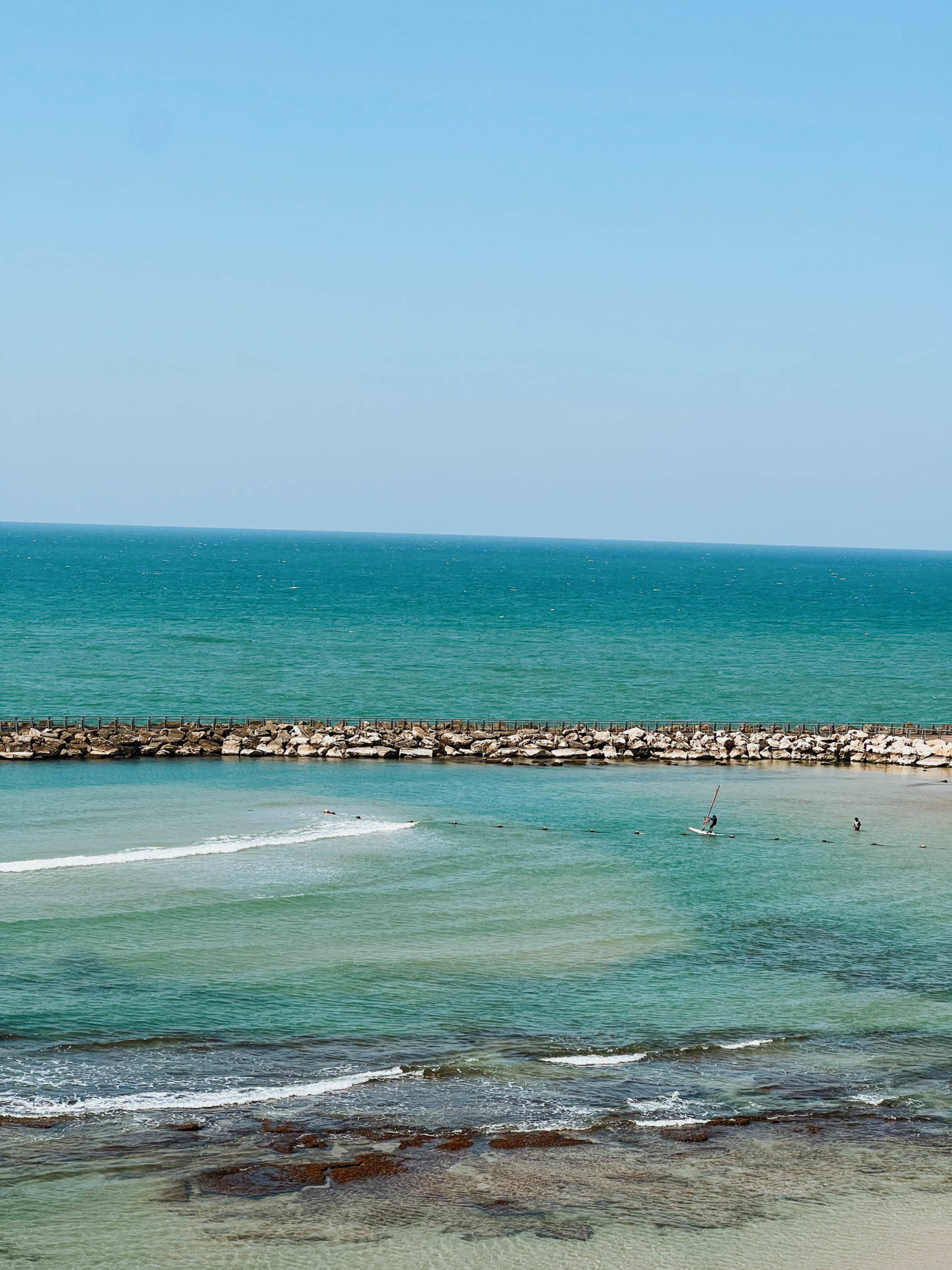

Extra time?
Head to Masada! This is an ancient fortress located on a plateau in the Judean Desert. It was the last stronghold of the Jews during the Great Revolt against the Romans.
The Jews of Masada committed mass suicide rather than surrender and suffer humiliation by Emperor Vespasian’s troops, taking their families with them.
The best way to see Masada is to take the cable car up and then hike down. There are also ranger-led tours available.
Or, stay longer in Jerusalem. Outside the Old City’s Damascus Gate is East Jerusalem, which has a largely Arab population. The cave system known as Solomon’s Quarries runs under the city beneath the gardens at the base of the wall. According to ancient mythology, this was where Jerusalem’s stone for its First Temple was quarried.
I also recommend spending some extra time in Tel Aviv as there are tons of things to see and do here.
How long to stay in Israel
I would recommend staying in Israel for at least a week. This will give you enough time to see all of the main sights and do some exploring. If you have more time, you can explore more of Tel Aviv or places like Masada.
Is Israel Safe?
For the most part: yes. However, there are things to note about safety while traveling like many other places. Israel, now and in the past has dealt with terror attacks and that’s important to recognize. So yes, you need to be aware of your surroundings. As a woman I felt very safe walking around Israel.

Israel is considered a safe country to travel to. However, as with any destination, it is important to take precautions and be aware of your surroundings. Petty crime such as pick-pocketing and theft does occur, so be sure to keep your belongings close and secure.
When traveling to Israel, it is important to be respectful of religious customs and sites. Remember that this is a holy land for many different religions and be considerate of others.
What to pack for Israel
Many wonder what you need to wear in Israel. Israel does not have the same customs as nearby Middle Eastern countries, you don’t need to worry about covering up. The only time you do is if visiting Temple Mount in Jerusalem – you’ll need to wear pants or a skirt and to cover your shoulders.
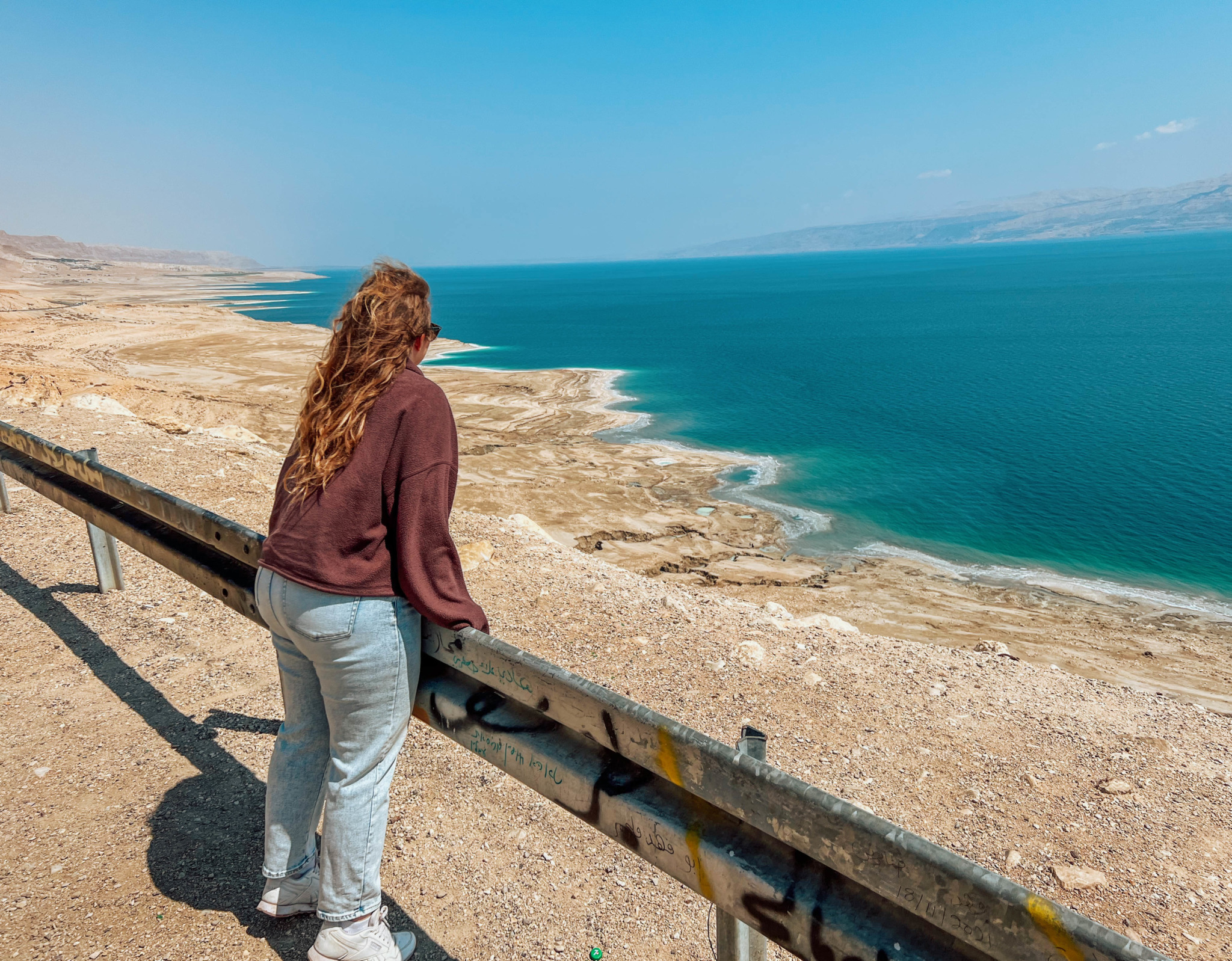
It can get cool at night and very hot in the summer.
When to go to Israel
I recommend the Fall or Spring time to visit to avoid the heat. It’s also a good idea to note when religious holidays take place like Passover and Ramadan. Things can be closed or crowded.
Things to Know Before You Go to Israel
English is widely spoken, while Hebrew and Arabic are the official languages in Israel. Most people speak English but it’s nice to know a few Hebrew words like “shalom” for hello, and “toda” for thank you.
Many places take credit cards, but in the markets cash is preferred. The “Shekel” is the currency but many places actually take American dollars.
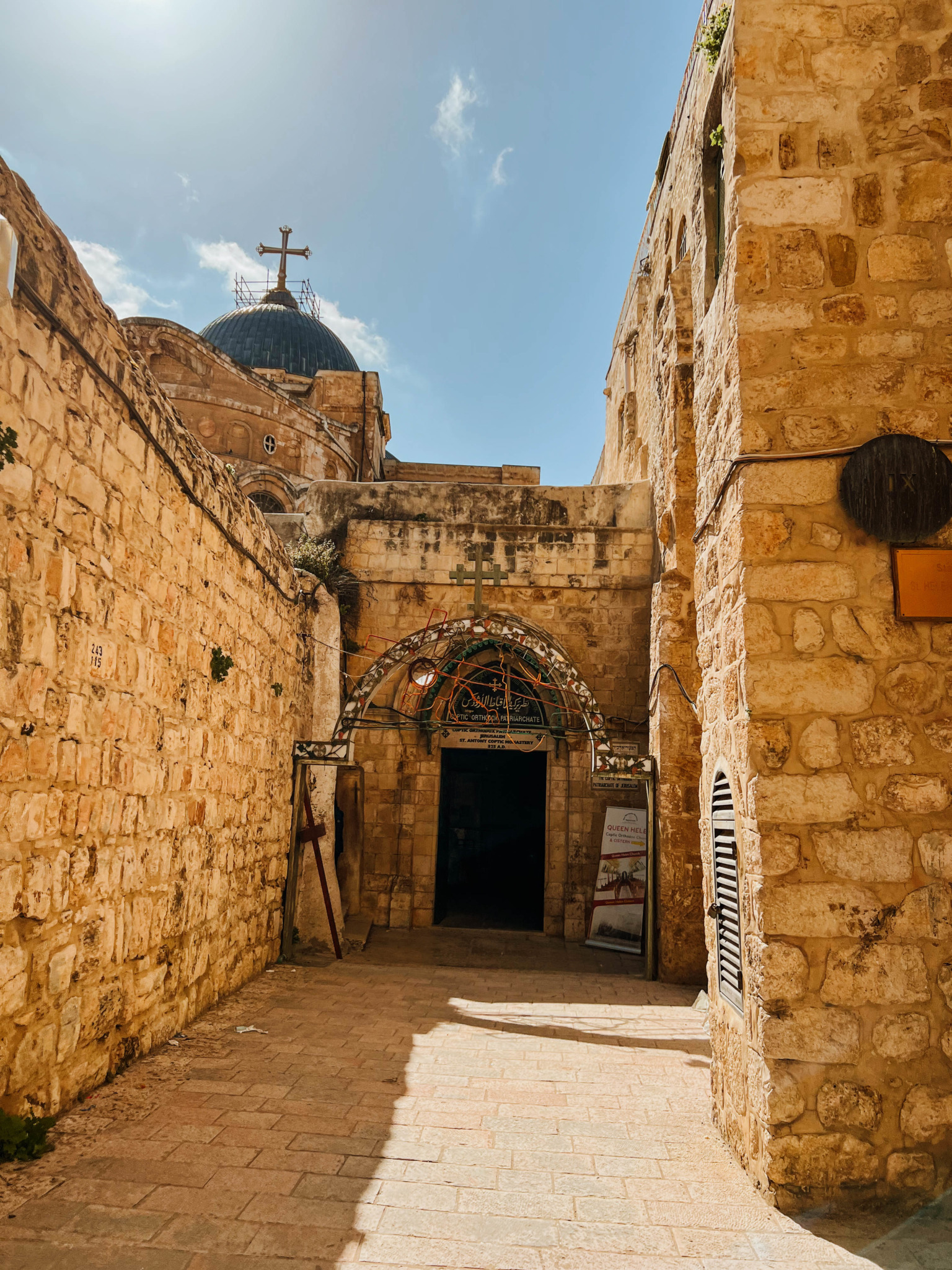
Israel is unlike any place I’ve ever visited. With modern restaurants and nightlife along with history steeped in religion and traditions that make you feel like you’ve stepped back in time.
The history here is some of the most significant and important in the world. Jerusalem is the holiest place on earth with the Western Wall, Church of the Holy Sepulchre where Jesus died on the cross and Temple Mount. But there’s many more places with important history like the Sea of Galilee, Qumran National Park, and Caesarea. If biblical sites are important to you Israel really can’t be beat.
Bottom line: if you’re interested in history, religious significant sites, natural beauty and culture I think you should visit Israel. In general, I believe in visiting most places in order to gain an understanding and to learn. Destinations which are often in the news are worth visiting so you can form your own opinions.
